Systematic approach to desk-top research and university projects
- Post author By admin
- Post date September 22, 2014
- No Comments on Systematic approach to desk-top research and university projects
How to conduct effective desk-top research?
This article is for any university student about to embark on writing essays or completing dissertations and projects for the first time. I have also run workshops introducing these methods and they do seem to be overwhelmingly useful even to more experienced researchers. This article is also intended to help dissertation supervisors who may want to produce a ‘mini-systematic review’ for an undergraduate or postgraduate research project. This provides a robust methodology for the students to follow and is a much more rewarding and exacting project than a mere literature review. It will also satisfy requirements of those professional bodies who look for an element of ‘data analysis’ within the project.
So, let us embark on an interesting and hopefully informative journey about how to carry out effective desk-top research.

Introducing the systematic review
The word “ systematic ” in relation to a review involves the use of precise methods to gather and assess the results of research publications that (most importantly) minimises bias within the process. The result should be a robust and reliable assimilation of evidence in order to reach a reliable conclusion. Medical systematic reviews are conducted and published through the Cochrane Library named after Archie Cochrane a Scottish doctor who established the idea of evidence-based medicine. Why do I mention systematic reviews in relation to desk-top research? Well – if you understand the premise and approaches of a systematic review and apply them to your essays, coursework and dissertations, then you will be undertaking a high quality piece of work (or suggesting a high quality assignment if you are setting the work). The steps highlighted below would also provide you with a methodology and the basis of a methods section for a dissertation.
Figure 1 illustrates the systematic approach. The details on the left hand side are the minimum approach that could be undertaken in an essay or piece of desk-top research. For more in-depth undergraduate projects, and certainly for full systematic reviews, the details on the right hand side would need to be fully understood and reported.
Full systematic reviews can be conducted on any subject, not just medical ones. I have written ones on education subjects – and here too, they are useful to pool knowledge about best practice, or to evaluate new innovations in teaching for example. In education, often the methods are more relaxed as generally education papers do not meet the high quality standards of medical papers and their research designs. This is often due to not being able to randomise groups of students / learners due to the constraints of timetabling and classrooms. This isn’t the entire story though, as generally there is a feeling that much medical research and education research is simply not conducted as well as it could be .
Systematic principles – we should all use them!
A full systematic review is a serious piece of research and I like to teach the principles to my university students wherever possible because it provides them with a basis for doing high quality literature reviews, essays and dissertations. In fact I believe that anyone conducting research should know these principles. How many times do we hear that people are just using a Google Search or even Scholar, and they think it is research? The mainstay for any professional research must be the use of peer-reviewed and edited articles, and Scholar will not provide a robust enough search of these, and will also retrieve non-peer-reviewed reports and documents. Interesting as background reading certainly, but not for citation within a professional piece of work.
1) Setting the research question
The formulation of a precise research question is the starting point for any research and can be quite tricky. In medicine the PICO framework is used to define the various elements – population, intervention, comparison and outcome measure. For example I might be interested whether probiotics help people with diarrhoea.
Population – patients with diarrhoea Intervention – probiotics Comparison – no treatment Outcome – alleviation of diarrhoeal symptoms
So a question might be,
In patients with diarrhoea, do probiotics compared to no treatment, alleviate symptoms?
A PICO based question is the starting point of any dissertation student of mine, although not all the categories may apply. Once the question is set, the search strategy evolves and we can start generating keywords around the question categories.
But let’s take an education example. I’m interested in free online learning in the form of massive online open courses – MOOCs and the student experience.
P = learners I = MOOCs C = face to face/ traditional learning O = student experience
The question might be,
Do MOOCs enhance the experience of learners compared to traditional methods?
2) Deciding where to search?
A systematic review will aim to find ALL the articles in the world! This means not just using electronic databases, but hand searching books and journals, and contacting experts for unpublished or ongoing research. This can be quite a time intensive process. Today, the process is greatly helped by being able to save your searches within electronic databases, so once established (e.g. you might run a search at the start of your student project), you can simply run it again at the end to check for recent articles. Be pragmatic with the time you have – you might not be able to search everywhere, and the school of thought is that actually a good search of electronic databases will retrieve you the majority of articles these days, although do take care if you are particularly interested in more historic ones that may not be digitised.
So, where you decide to search will depend on what your organisation or local library has access to. Web of Knowledge and Medline are the mainstays of my research – which is both medical and educational. For my review on MOOCs I also used SCOPUS, IEEE and others. These cover both conference proceedings and workshop proceedings alongside published articles (original research, literature reviews, comments, opinions, letters etc).
3) Building up keyword lists for searching
From our PICO categories, we can start building up lists of keywords on similar themes.
P = learners, students, users I = MOOCs, xMOOC, cMOOC, massive online open course, free course C = face to face teaching, traditional teaching O = student experience, learning gain, knowledge gain
The next step is building up these words further. This is where I recommend using Wikipedia . It is a great keyword generator. I will also run some searches at this point to find relevant studies and look at their keywords to add to the list. If you were carrying out a full systematic review to publish, you would spend some time building up your keywords and then testing the results to ensure you were retrieving relevant articles. This iterative process might go on for some time, although for shorter-time scale projects such as undergraduate work, this may not be desirable.
4) Getting the keywords organised using Boolean logic
In some research I recently conducted looking at massive online open courses – MOOCs – I used six online databases to search, and used Boolean notation for searching with my keyword lists. There is a nice explanation of the use of Boolean logic on Ithaca College Library website. This in its simplest form uses the words (inputed in capitals – AND, OR, NOT) to combine keywords in order to expand and cross-reference your search accordingly. The Figure 2 summarises this approach.
You can also truncate words to search for all the variants of word endings using an asterisk *
e.g. MOOC MOOCs we can search for MOOC* e.g. Massive or massively we can search for massiv*
If searching phrases these need to be in quotations otherwise the individual words will be searched for separately and return thousands of results.
e.g. “massiv* online open cours*”
I’ve referred to the use of Boolean notation in another blog article – “ Seek and ye shall find ” complete with webcasts and instructions. This is following very simple principles and those expert in searching and forming Boolean instruction will be more complex than this. Here are some of the more commonly used ‘operators’ or instructions within the notation.
# means search OR – this will link together keywords and is used to broaden a search AND – this will cross-reference two searches (and not expand the search as you might suspect) NOT – this will exclude terms from the search
Going back to our question whether probiotics are effective for patients with diarrhoea, we could just haphazardly search for the keywords as shown below in Figure 3. However, as shown by the numbers, you will retrieve vast numbers of records and your search will not be specifically addressing your question.
The use of Boolean notation can be illustrated by the formation of a Venn diagram which shows the principles of combining the three separate searches using the word ‘AND’. The ‘OR’ term will enable you to expand out your searches such as for probiotics and lactobacillus. You may also search for humans and adults as a focus, and also the disease of interest. By using the ‘AND’ term you are cross-referencing the three searches to find those papers in the centre of the Venn diagram (Figure 4) – you can see a more manageable number of 1312 papers. These of course can be further limited perhaps by searching just for clinical trials.
5) Running the search and being organised!
Organisation is key and many online databases can set up accounts to save your searches (Medline is great for this) or export your outputs to a reference manager. I prefer to sometimes run the search, save the results as a ‘txt’ file and input into Microsoft Excel for analysis. The analysis steps might be important in a systematic review where you have pre-set what your research question is and your criteria for including studies. You can therefore use a new Excel sheet for each step in the analysis to maintain a good record of your process.
If you are completing a full systematic review, you will wish to refine your search in an iterative manner. That is, you will look at your search results to see if they are retrieving relevant articles, and refine the keywords and Boolean strategy if necessary to produce a more precise result. This step can in my experience take far more time than you might realise. The benefit is, once the search is right, you can save it and use it to update your coursework / project or review in the future.
6) What are study inclusion and exclusion criteria? (Could be optional depending on type of project or research)
For an undergraduate project you may not wish to be so stringent to think about what types of studies you wish to include or exclude. If you are completing a literature review, you may want just to provide an overall evaluation of everything that you have found. If you are being more systematic and wish to generate data for your project, you can follow the steps undertaken by a full systematic review, and record the numbers of studies you include and exclude at each phase. The beauty of this within a project or piece of research is that you are generating legitimate research data that can be displayed in a number of established figures and formats as illustrated below in Figure 5. Here, the results of a literature search and numbers of studies that are excluded during the process are shown.
Some excellent details on how to report systematic review results can be found not he following website, describing the PRISMA statements – preferred reporting items for systematic reviews and meta analyses .
In my studies of ‘education’, I set the entry gate quite wide so not to restrict the numbers of studies based on their design and quality. You will need to decide your inclusion and exclusion criteria at the start when you are writing your research proposal, or planning your essay. If you did wish to consider excluding types of articles, you might for example be doing a medical review and may well wish to only include randomised controlled trials. You might be researching an area of biomedical science and wish only to include animal investigations. If you are interested in systematic reviews in education specifically, this is a subject of development and debate the present time (e.g. Bennett 2005).
When you are analysing the results of your searches you will often soon spot ‘duplicate studies’. You will almost certainly find the same study on a number of databases, so you can use the ‘sort’ function to scan your lists of authors and remove duplicates. Studies can be duplicated in more subtle ways, for example an author might publish an abstract of data in a national journal, and then present the data at international conference. These are strictly duplicate studies because they contain the same data. The duplicate will need to be removed as shown in Figure 5.
7) Data collection and analysis
If you are intending to follow a systematic approach you will need to construct a series of spreadsheets to gather and organise your results. If you are completing a full systematic review you will establish the layout of a data extraction table prior to starting the review. This would include items such as author name, date of publication, methodology, outcome measures, and a host of other details. Again, the Cochrane organisation has further details on data extraction .
Sorting your search results and applying the inclusion and exclusion criteria does take time, but ultimately it will give you the good results you are looking for. In a full-scale systematic review a number of authors would do these steps independently to ensure the process is accurate and to avoid bias introduced by personal choices and preferences. A third author can help discuss any areas of conflict or indecision. Filtering of the papers generally occurs in two phases:
Phase 1 of filtering. You can quickly filter your results often by just looking at the titles and author names to identify duplicates. You may need to review the abstracts at this point to ensure they match your inclusion criteria. Anything that is unclear will need to be checked by reviewing the full paper.
Phase 2 of selecting and filtering. If your inclusion criteria is looking for a specific methodology – e.g. randomised controlled trial, or specific subset of articles – e.g. animal studies, if you cannot glean this information from the abstract you will need the full paper to review.
So you might go through a phase of ordering full papers, and again use a reference manager of file system on your computer to organise yourself. I generally obtain the full paper for every article as I go along.
8) Qualitative versus quantitive analysis
For a full systematic review, if you have identified enough studies you can then extract data for pooling in a meta-analysis to provide quantitative data. As part of a review it is also good practice to provide a brief ‘narrative’ of the papers identified, and also to summarise your results in table form. The extent to which you do all of this will depend on the numbers of papers retrieved, and for the purposes of ‘containing’ an undergraduate project within 5000 words which is often the limit, you may need to restrict the textual explanations of the papers.
Providing the ‘narrative’ is often the part that students struggle to do within project result sections, therefore it is worth gaining a deeper understanding of the approaches and styles that can be undertaken. Popay et al in 2006 wrote a report on narrative synthesis that may be a starting point.
9) Finishing off and identifying themes and conclusions
If you have adhered to your question, keywords and inclusion / exclusion criteria, you should end up with a corpus (body of literature) directly relevant to your question. Depending on the volume of papers retrieved you may be able to look for sub-themes and organise your discussion around these. For example, searching for probiotics and diarrhoeal disease may reveal areas of research focusing on children as opposed to adults for example. The research may focus on different types of bacteria or blends of bacteria. A systematic approach is a great way of organising your research from start to finish!
Bennett, J., Fred Lubben , Sylvia Hogarth & Bob Campbell (2005). Systematic reviews of research in science education: rigour or rigidity?, International Journal of Science Education, 27:4, 387-406.
Cochrane Library (2014). About Cochrane Systematic Reviews and Protocols. Available: http://www.thecochranelibrary.com/view/0/AboutCochraneSystematicReviews.html
Popay, J., Roberts, H., Sowden, A., Petticrew, M., Arai, L., Rodgers, M., … & Duffy, S. (2006). Guidance on the conduct of narrative synthesis in systematic reviews. A product from the ESRC methods programme. Version, 1.
- Tags research methods , Study skills , systematic review

Leave a Reply Cancel reply
Your email address will not be published. Required fields are marked *
- Skip to main content
- Skip to primary sidebar
- Skip to footer
- QuestionPro

- Solutions Industries Gaming Automotive Sports and events Education Government Travel & Hospitality Financial Services Healthcare Cannabis Technology Use Case AskWhy Communities Audience Contactless surveys Mobile LivePolls Member Experience GDPR Positive People Science 360 Feedback Surveys
- Resources Blog eBooks Survey Templates Case Studies Training Help center
Home Market Research
Desk Research: What it is, Tips & Examples

What is desk research?
Desk research is a type of research that is based on the material published in reports and similar documents that are available in public libraries, websites, data obtained from surveys already carried out, etc. Some organizations also store data that can be used for research purposes.
It is a research method that involves the use of existing data. These are collected and summarized to increase the overall effectiveness of the investigation.
Secondary research is much more cost-effective than primary research , as it uses existing data, unlike primary research, in which data is collected first-hand by organizations, companies, or may employ a third party to obtain the data in your name.
LEARN ABOUT: Data Management Framework
Desk research examples
Being a cost-effective method, desk research is a popular choice for businesses and organizations as not everyone can pay large sums of money to conduct research and collect data. That is why it’s also called “ documentary research “.
Here are some more common secondary research methods and examples:
1. Data available on the Internet: One of the most popular ways to collect data for desk research is through the Internet. The information is available and can be downloaded with just one click.
This data is practically free or you may have to pay a negligible amount for it. Websites have a lot of information that companies or organizations can use to meet their research needs. However, you need to consider a reliable website to collect information.
2. Government and non-government agencies: Data for secondary research can also be collected from some government and non-government agencies. There will always be valuable and relevant data that companies or organizations can use.
3. Public libraries: Public libraries are another good source to search for data by doing desk research. They have copies of important research that has been done before. They are a store of documents from which relevant information can be extracted.
The services offered at these public libraries vary. Most often, they have a huge collection of government publications with market statistics, a large collection of business directories, and newsletters.
4. Educational Institutions: The importance of collecting data from educational institutions for secondary research is often overlooked. However, more research is done in colleges and universities than in any other business sector.
The data collected by universities is mainly used for primary research. However, companies or organizations can go to educational institutions and request data.
5. Sources of business information: Newspapers, magazines, radio and television stations are a great source of data for desk research. These sources have first-hand information on economic developments, the political agenda, the market, demographic segmentation and similar topics.
Companies or organizations can request to obtain the most relevant data for their study. Not only do they have the opportunity to identify your potential customers, but they can also learn the ways to promote their products or services through these sources, as they have a broader scope.
Differences between primary research and Desk Research
| Primary research | Secondary research |
|---|---|
| Research is carried out first-hand to obtain data. The researcher “owns” the collected data. | The research is based on data collected from previous research. |
| Primary research is based on raw data. | Secondary research is based on proven data that is previously analyzed and filtered. |
| The data collected is adjusted to the needs of a researcher, it is personalized. Data is collected based on the absolute needs of organizations or companies. | The data may or may not be in accordance with the requirement of a researcher. |
| The researcher is deeply involved in data collection. | Unlike primary research, secondary research is quick and easy. Its aim is to achieve a broader understanding of the subject. |
| Primary research is an expensive and time-consuming process to collect and analyze the data. | Secondary research is a quick process, as the data is available. The researcher must know where to explore to obtain the most appropriate data. |
How to do a desk research
These are the steps to follow to conduct a desk investigation:
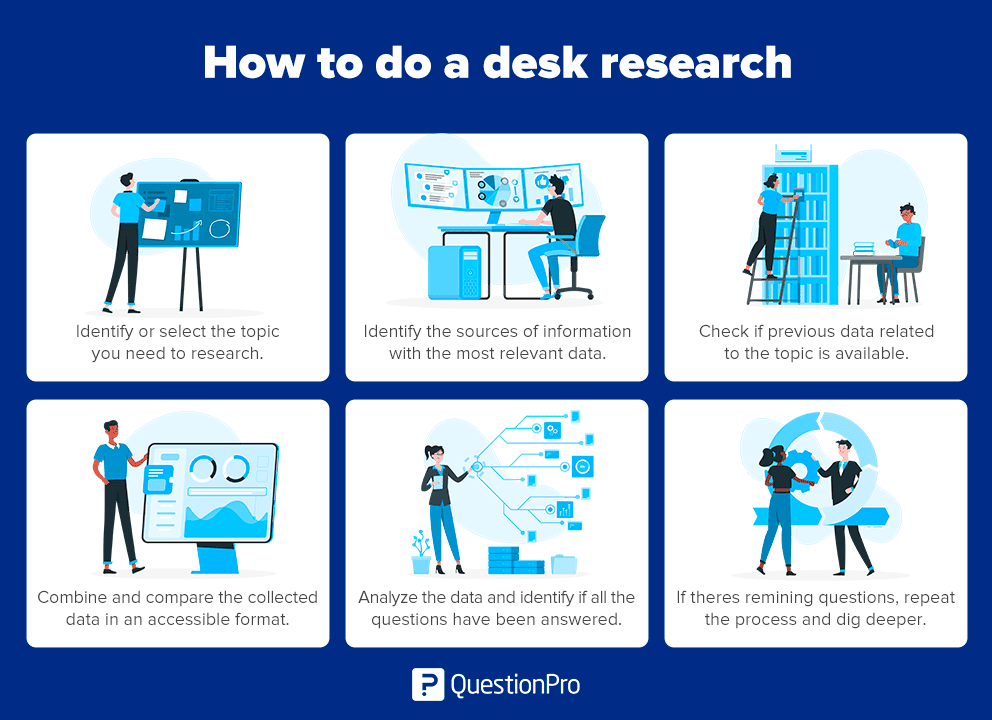
- Identify the research topic: Before you begin, identify the topic you need to research. Once done, make a list of the attributes of the research and its purpose.
- Identify research sources: Subsequently, explain the sources of information that will provide you with the most relevant data applicable to your research.
- Collect existing data: Once the sources of information collection have been narrowed, check to see if previous data is available that is closely related to the topic. They can be obtained from various sources, such as newspapers, public libraries, government and non-government agencies, etc.
- Combine and compare: Once the data is collected, combine and compare it so that the information is not duplicated and put it together in an accessible format. Make sure to collect data from authentic sources so you don’t get in the way of your investigation.
- Analyze data: Analyze the data that is collected and identify if all the questions have been answered. If not, repeat the process to dig deeper into practical ideas.
- Most of the information is secondary research and readily available. There are many sources from which the data you need can be collected and used, as opposed to primary research, where data must be collected from scratch.
- It is a less expensive and time-consuming process, as the required data is readily available and does not cost much if it is extracted from authentic sources.
- The data that is collected through secondary or desktop research gives organizations or companies an idea about the effectiveness of primary research. Thus, a hypothesis can be formed and the cost of conducting the primary research can be evaluated.
- Doing desk research is faster due to the availability of data. It can be completed in a few weeks, depending on the objective of the companies or the scale of the data required.
Disadvantages
- Although the data is readily available, the credibility and authenticity of the available information must be assessed.
- Not all secondary data resources offer the latest reports and statistics. Even when they are accurate, they may not be up to date.
Desk research is a very popular research method, because it uses existing and reliable data that can be easily obtained. This is a great benefit for businesses and organizations as it increases the effectiveness of the investigation.
QuestionPro provides the best market research platform to uncover complex insights that can propel your business to the forefront of your industry.
START A FREE TRIAL
MORE LIKE THIS

Employee Loyalty: Strategies for Long-Term Business Success
Aug 19, 2024

Jotform vs SurveyMonkey: Which Is Best in 2024
Aug 15, 2024
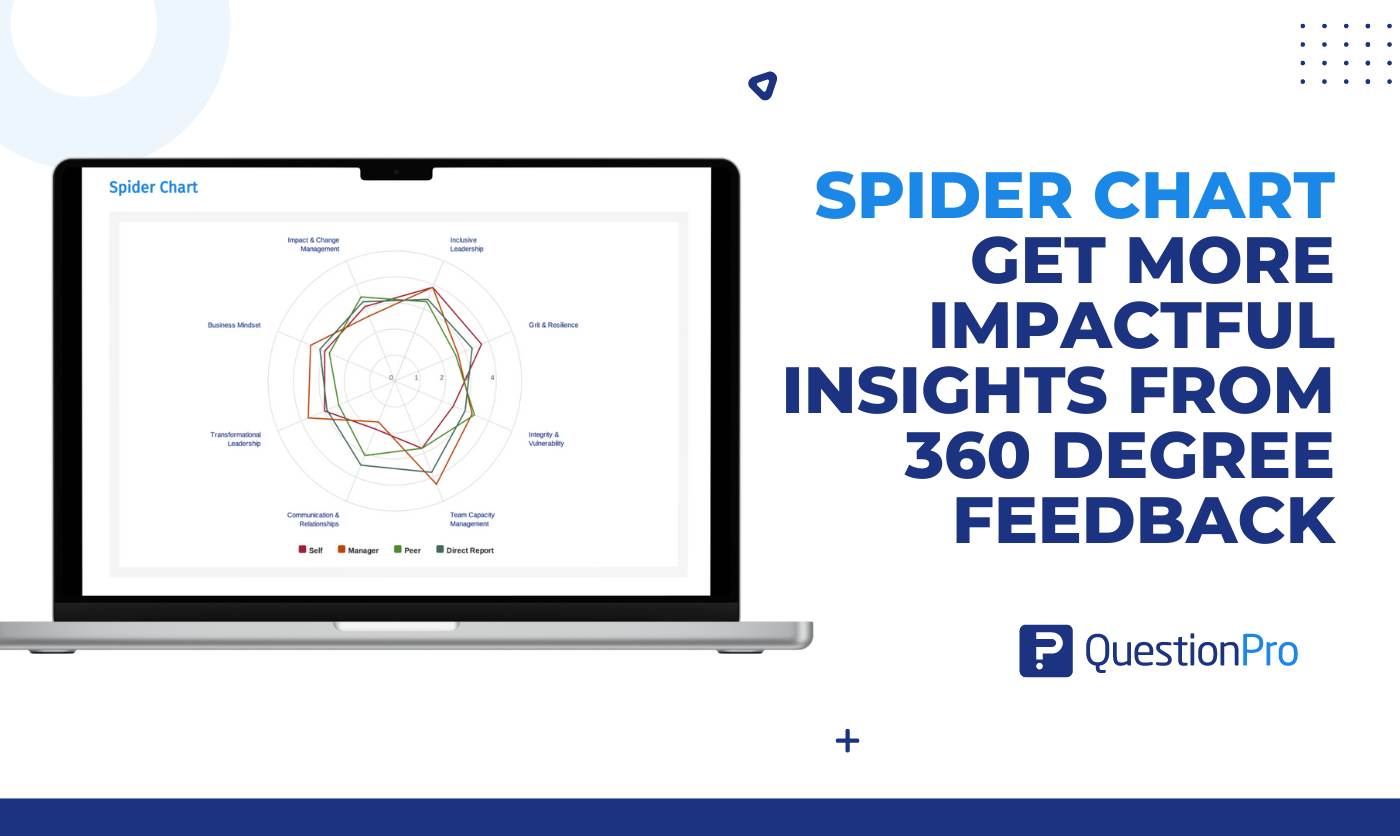
360 Degree Feedback Spider Chart is Back!
Aug 14, 2024

Jotform vs Wufoo: Comparison of Features and Prices
Aug 13, 2024
Other categories
- Academic Research
- Artificial Intelligence
- Assessments
- Brand Awareness
- Case Studies
- Communities
- Consumer Insights
- Customer effort score
- Customer Engagement
- Customer Experience
- Customer Loyalty
- Customer Research
- Customer Satisfaction
- Employee Benefits
- Employee Engagement
- Employee Retention
- Friday Five
- General Data Protection Regulation
- Insights Hub
- Life@QuestionPro
- Market Research
- Mobile diaries
- Mobile Surveys
- New Features
- Online Communities
- Question Types
- Questionnaire
- QuestionPro Products
- Release Notes
- Research Tools and Apps
- Revenue at Risk
- Survey Templates
- Training Tips
- Tuesday CX Thoughts (TCXT)
- Uncategorized
- What’s Coming Up
- Workforce Intelligence

- Transforming Society
- Open access
- Bristol University Press Digital

Sign up for 25% off all books
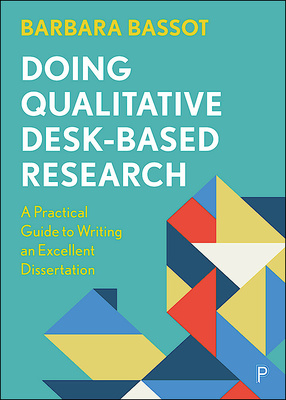
Doing Qualitative Desk-Based Research
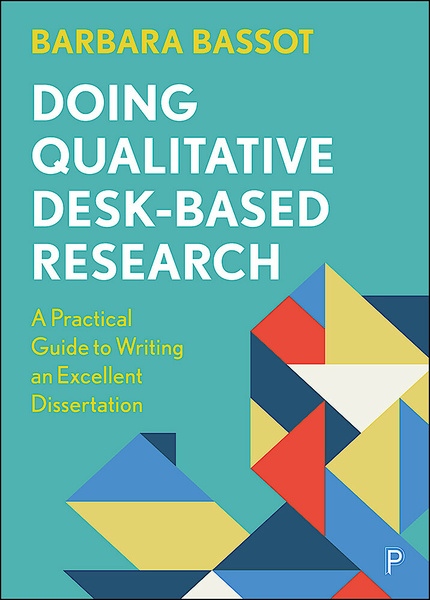
A Practical Guide to Writing an Excellent Dissertation
By Barbara Bassot
Recommend to library

Request inspection copy
Request e-inspection copy
Read the first three chapters for free:
- Description
Are you planning a desk-based qualitative research project, but aren’t sure how to get started?
This essential book provides all the guidance and advice you'll need to complete your project. Using two key visual pedagogical tools, the Metaphorical Tent and the Research Triangle, the book shows you how to produce vibrant and stimulating in-depth qualitative research that draws on high-quality data readily available via the internet. The book
• takes you through the research process step-by-step, from choosing a topic to writing up conclusions;
• examines a wide range of written, visual and audio data sources;
• includes helpful case studies to demonstrate the practical application of concepts.
Concise, practical and jam-packed with valuable tips, features and examples, this book will enable you to complete a successful desk-based research project you can be proud of.
"Provides great guidance on how to do desk-based research. Covers all aspects of doing desk-based research. A great resource for undergraduate students." Erin Pritchard, Liverpool Hope University
“Finally! A book that provides students with a clear, comprehensive, compassionate and accessible guide to desk-based qualitative primary research. All dissertation modules should include this book on their reading list.” Emma Milne, Durham University
“From coming up with an idea to writing up, this is a brilliant ‘how to’ guide for those students doing qualitative dissertations from the confines of their desk.” Tom Clark, University of Sheffield
“Barbara Bassot captures the zeitgeist in this timely addition to the literature on undergraduate student research. This accessible book offers tailored guidance to conducting desk-based research on the information super-highway.” Martin E. Purcell, University of Dundee
“This text is a practical guide for undergraduates and postgraduate students. It provides a holistic overview of the nature and purpose of qualitative research and guidance on doing desk-based research.” Val Sylvester, Birmingham City University
“A highly engaging and accessible guide to undertaking qualitative desk-based research for a dissertation. The book gives insightful tips for students from start to finish – building on the author’s extensive experience.” Jessica Bradley, University of Sheffield
“A no-nonsense guide for the undergraduate dissertation journey.” Gernot Klantschnig, University of Bristol
Barbara Bassot is an associate of Canterbury Christ Church University where she worked as Senior Lecturer in the Centre for Career and Personal Development for a number of years. She lectured on undergraduate and postgraduate programmes and regularly supervised students doing their first piece of independent research. She has published a number of books on research methods, reflective practice and career development.
The structure of this book and how to use it
Part 1: Preparing the ground
1. Introduction
2. Choosing a topic
3. Keeping a research journal
4. Writing a strong research proposal
Part 2: Assembling the structure
5. The importance of your research question
6. Context, background and introduction
7. Selecting high quality data resources
8. Literature review
9. Desk-based methodologies
11. Data analysis and techniques
12. Writing conclusions and recommendations
Part 3: Keeping your tent stable and secure
13. Getting the support you need
14. Managing desk-based research

Understanding Research for Social Policy and Social Work (Second Edition)
Edited by Saul Becker , Alan Bryman and Harry Ferguson
Find out more
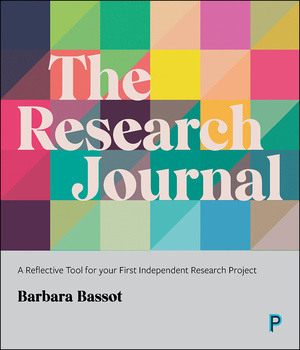
The Research Journal
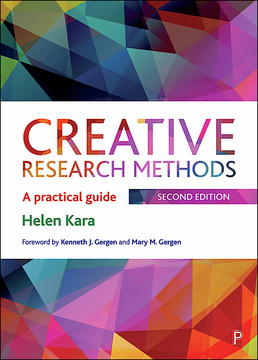
Creative Research Methods
By Helen Kara
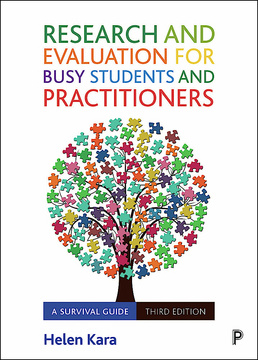
Research and Evaluation for Busy Students and Practitioners
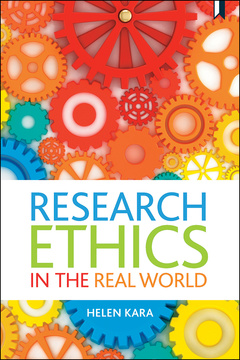
Research Ethics in the Real World
- Customer Relationship Management
Desk Research - Methodology and Techniques
As depicted by name Desk Research is the research technique which is mainly acquired by sitting at a desk .
Desk research is basically involved in collecting data from existing resources hence it is often considered a low cost technique as compared to field research, as the main cost is involved in executive’s time, telephone charges and directories. However, it could also be a complete waste of time and money if the researcher does not have the proper knowledge of how the research is performed.

Desk research is very effective and can be conducted in starting phase of market research as it is quite quick and cheap and most of the basic information could be easily fetched which can be used as benchmark in the research process.
There are basically two types of desk research techniques:
The main advantage here in performing internal desk research is that it involves internal and existing organizational resources to organize the collected data in such a way that it is not only efficient but also usable. Internal desk research is comparatively very cheap and effective as internal recourses are deputed and the expenditure in getting data from outside is less.
There could be two approaches for digging out the relevant information from internet, one is directly browsing the specific information from industrial, marketing or business sites and extracting the information out of these sites. Secondly, using the various search engines like www.google.com, www.yahoo.com, www.infoseek.go.com, www.altavista.com etc, for modulated searching.
The important aspect here is to refine the searching techniques in such a way that results are promising and relevant. For this it is necessary that the researcher should know the importance of the research and follow the guideline intellectually to reduce the efforts made and time consumed in searching.
Customers are the one who are considered the most informed as they are actually using products and services and are aware of the current market trends more than any other. Hence the feedback and information provided by customers is the most accurate and useful data which can be used most effectively in the further process of research.
Related Articles
- Customer Relationship Measurement
- Market Research and CRM
- Market Research Process
- Field Research
- Data Analysis and Compilation
View All Articles
Authorship/Referencing - About the Author(s)
The article is Written and Reviewed by Management Study Guide Content Team . MSG Content Team comprises experienced Faculty Member, Professionals and Subject Matter Experts. We are a ISO 2001:2015 Certified Education Provider . To Know more, click on About Us . The use of this material is free for learning and education purpose. Please reference authorship of content used, including link(s) to ManagementStudyGuide.com and the content page url.
- Origin of CRM
- Features of CRM
- Importance of CRM
- CRM and Marketing
- Misunderstandings about CRM
- Benefits and Challenges of CRM Software
- CRM (Customer Relationship Management) Software and Its Importance
- What is Customer Relationship
- Types of Customers
- Orientation of Customers
- Customer Modeling
- Customer Profiling
- Regression Scoring
- Quality of Relatiosnhip with Customers
- Need of Relatiosnhip with Customers
- Customer Relationship with Supplier
- Cost Sensitivity of Customers
- Bargaining Power of Customers
- Desk Research
- Report Preparation
- Action Plan in Report Preparation
- Strategic CRM
- Operational CRM
- Analytical CRM
- Collaborative CRM
- Customer’s Response - Introduction
- Measuring Customer Response
- Medium of Customer Responses
- Qualities of a Good Response
- Response in Consumer Sector
- Response in Core Sector
- Customer Acquisition - Introduction
- Customer Life Cycle
- Customer Acquisition Cost
- Measuring Acquisition Equity
- Customer Loyalty - Introduction
- Customer Loyalty & Satisfaction
- Drivers of Customer Loyalty
- Customer Loyalty Breakers
- Tracking Customer Loyalty
- Increasing Customer Loyalty
- Customer Satisfaction
- Why Dissatisfaction in Customers
- Measuring Customer Satisfaction
- Methods of Measuring Satisfaction
- Factors affecting Customer Satisfaction
- Customer Retention - Introduction
- Customer Retention Strategy
- Determinants of Customer Retention
- Methods/Tools for Customer Retention
- Myths about Customer Retention
- Benefits of Cloud CRM for Small Businesses
- Practical Tips for Effectively Implementing Salesforce
Copyright © SurveySparrow Inc. 2024 Privacy Policy Terms of Service SurveySparrow Inc.
Desk Research 101: Definition, Methods, and Examples

Parvathi Vijayamohan
Last Updated: 13 August 2024
12 min read

Table Of Contents
- Desk Research Guide
- What is Desk Research
- Desk Research Methods
- Desk Research Benefits
- Desk Research Drawbacks
- When to Use Desk Research - Examples
- How to Do Research
If you ever had to do a research study or a survey at some point, you would have started with desk research .
There’s another, more technical name for it – secondary research. To rewind a bit, there are two types of research: primary , where you go out and study things first-hand, and secondary , where you explore what others have done.
But what is desk research? How do you do it, and use it? This article will help you:
- What is desk research
- Different desk research methods
- Desk research benefits
- Major drawbacks of desk research
- Desk research examples
- How to do desk research
What is Desk Research?
Desk research can be defined as a type of market/product research, where you collect data at your desk (metaphorically speaking) from existing sources to get initial ideas about your research topic.
Desk research or secondary research is an essential process from a business’s point of view. After all, secondary data sources are such an easy way to get information about their industry, trends, competitors, and customers.
Types of Secondary Data Sources
#1. Internal secondary data: This consists of data from within the researcher’s company. Examples include:
- Company reports and presentations
- Case studies
- Podcasts, vlogs, and blogs
- Press releases
- Websites and social media
- Company databases and data sets
#2. External secondary data: Researchers collect this from outside their respective firms. Examples include:
- Digital and print publications
- Domain-specific publications and periodicals
- Online research communities, like ResearchGate
- Industry speeches and conference presentations
- Research papers
Difference Between Desk Research and Primary Research
Research is mainly two parts - primary and secondary (desk). Here’s a brief take on the difference between the two. This will help you clear up any doubts you have.
| Desk Research | Primary Research |
|---|---|
| Research is done on the existing data. | Research is done on original, first-hand data. |
| Uses data from secondary sources like books, reports, databases, etc. | Gathers data directly from original sources through surveys, interviews, etc. |
| Relies heavily on analyzed and interpreted information. | Collects raw, unanalyzed data. |
| Data may not be specific to researchers' needs. | Data can be tailored to each research objective. |
| Relatively inexpensive as the data is already collected and analyzed. | Comparatively expensive as data collection is done from scratch. |
| Some examples are literature reviews, industry reports, market statistics, etc. | Some examples are surveys, interviews, focus groups, etc. |
6 Popular Desk Research Methods
If you are seeking ways to conduct desk research, here are some methods you can follow.

The Internet
No surprise there. When was the last time you checked a book to answer the burning question of “Is pineapple on pizza illegal?” (it should be).
However, choosing authentic and credible sources from an information overload can be tricky. To help you out, the Lydia M. Olson Library has a 6-point checklist to filter out low-quality sources. You can read them in detail here .
You have earned some serious street cred if your preferred source is a library. But, jokes apart, finding the correct information for your research topic in a library can be time-consuming.
However, depending on which library you visit, you will find a wealth of verifiable, quotable information in the form of newspapers, magazines, research journals, books, documents, and more.
Governmental and Non-Governmental Organizations
NGOs, and governmental agencies like the US Census Bureau, have valuable demographic data that businesses can use during desk research. This data is collected using survey tools like SurveySparrow .
You may have to pay a certain fee to download or access the information from these agencies. However, the data obtained will be reliable and trustworthy.
Educational Institutions
Colleges and universities conduct plenty of primary research studies every year. This makes them a treasure trove for desk researchers.
However, getting access to this data requires legwork. The procedures vary according to the institution; among other things, you will need to submit an application to the relevant authority and abide by a data use agreement.
Company Databases
For businesses, customer and employee data are focus areas all on their own. But after the pandemic, companies are using even more applications and tools for the operations and service sides.
This gives businesses access to vast amounts of information useful for desk research and beyond. For example, one interesting use case is making employee onboarding more effective with just basic employee data, like their hobbies or skills.
Commercial Information Media
These include radio, newspapers, podcasts, YouTube, and TV stations. They are decent sources of first-hand info on political and economic developments, market research, public opinion, and other trending subjects.
However, this is also a source that blurs the lines between advertising, information and entertainment. So as far as credibility is concerned, you are better off supporting this data with additional sources.
How Can Desk Research Be Helpful?
The following listed are some ways desk research can really help you.
#1. Better Domain Understanding
Before doing market research, running a usability test, or starting any user-centric project, you want to see what companies have done in the past (in related areas, if not the same domain). Then, instead of learning everything from scratch, you can review their research, successes, and mistakes and learn from them.
#2. Quicker Opportunity Spotting
How do you know if you’ve found something new? By reviewing what has gone before. By doing this, you can spot gaps in the data that match up with the problem you’re trying to solve.
#3. More Money Saved
Thanks to the internet, most of the data you need is at your fingertips, and they are cheaper to compile than field data. With a few (search and mental) filters, you can quickly find credible sources with factual information.
#4. More time saved
You have less than 15 minutes with your research participant. Two minutes if you’re doing an online survey. Do you really want to waste that time asking questions that have already been answered elsewhere? Lack of preparation can also hurt your credibility.
#5. Better Context
Desk research helps to provide focus and a framework for primary research. By using desk research, companies can also get the insight to make better decisions about their customers and employees.
#6. More Meaningful Data
Desk research is the yin to the yang of field research – they are both required for a meaningful study. That’s why desk research serves as a starting point for every kind of study.
This brings us to the last question.
5 Major Drawbacks of Desk Research
While there are some benefits when doing desk research, it comes with its drawbacks and challenges. Let's have a look at them.

Data Relevancy and Accuracy
To make informed decisions, it's crucial to have up-to-date data. With most of the data in desk research already collected, the probability of it being relevant to contemporary use is low. With inaccurate data, the end results can be skewed.
Depth and Insight Provided
It's possible that the insight of the data in desk research can't be as deep, especially in qualitative aspects. For example, for something like understanding consumer behavior or preferences, you need new and fresh data. This is not possible with desk research.
If you are someone looking to learn more about your customer, then we recommend going for primary research… preferably using tools like SurveySparrow .
The tool can help you collect fresh and up-to-date data and understand your customers better. From their preferences to emotions, learn about your customers comprehensively.
14-day free trial • Cancel Anytime • No Credit Card Required • No Strings Attached
Data Bias and Inconsistency
Data obtained from existing sources can be biased or incomplete. Each researcher has a different perspective (or agenda), and depending on that, the researched data can be focused. Therefore, it's safe to say that you can expect the data to be incompatible.
Data Accessibility
The data availability or accessibility can be a major issue. Though you can find research materials existing, it's not necessary that you will be able to access them.
For example, consider Statista. It's one of the top companies that provide industry and region-focused statistics reports. However, except for a few, most of the data are available only on purchase, which, by the way, is expensive...very expensive.
Time Consumption
Tracking down all the necessary researched data for your desk research can be quite a time-consuming process. Not to mention how monotonous it can be.
Use Cases Where You Can Use Desk Research - Examples
The following are some use cases where desk research has been used. Go through them and learn how and when to use desk research.
#1. Testing Product-Audience Match
Let’s say you’re developing a fintech product. You want to do a concept testing study. To make sure you get it right, you’re interested in finding out your target audience’s attitudes about a topic in your domain. For e.g., Gen Z’s perceptions about money in the US.
With a quick Google search, you get news articles, reports, and research studies about Gen Z’s financial habits and attitudes. Also, infographics and videos provide plenty of quantitative data to draw on.
These steps are a solid starting point for framing your concept testing study. You can further reduce the time spent on survey design with a Concept Testing Survey Template . Sign up to get free access to this and hundreds more templates.

#2. Tracking the Evolution of the Web
As we wade into the brave new world of Web 5.0 , there are quite a few of us who still remember static websites, flash animations, and images sliced up into tables.
If you want to refresh your memory, you can hop on the Wayback Machine . iI gives you access to over 20 years of web history, with over 635 billion web pages saved over time!
Curiosity aside, there are practical use cases for this web archive. SEO specialist Artur Bowsza explores this in his fantastic article Internet Archeology with the Wayback Machine .
Imagine you’re investigating a recent drop in a website’s visibility. You know there were some recent changes in the website’s code, but couldn’t get any details. Or maybe you’re preparing a case study of your recent successful project, but the website has changed so much, and you never bothered to take a screenshot. Wouldn’t it be great to travel back in time and uncover the long-forgotten versions of the website – like an archaeologist, discovering secrets from the past but working in the digital world?
#3. Repairing a Business Reputation
As a brand, you hope that a crisis never happens. But if hell does break loose, having a crisis management strategy is essential.
If you want examples, just do a Google search. From Gamestop getting caught in a Reddit stock trading frenzy to Facebook being voted The Worst Company of 2021 , we have seen plenty of brands come under fire in recent years.
Some in-depth desk research can help you nail your crisis communication. Reputation management expert Lida Citroen outlines this in her article 7 Ways to Recover After a Reputation Crisis .
Conduct a thoughtful and thorough perception sweep of the reputation hit’s after-effects. This includes assessing digital impact such as social media, online relationships and Google search results. The evaluation gives you a baseline. How serious is the situation? Sometimes the way we believe the situation to be is not reflected in the business impact of the damage.
How Do You Do Desk Research?
Good question! In her blog post , Lorène Fauvelle covers the desk research process in detail.
You can also follow our 4-step guide below.
- First, start with a general topic l ike “handmade organic soaps”. Read through existing literature about handmade soaps to see if there is a gap in the literature that your study can fill.
- Once you find that gap, it’s time to specify your research topic . So in the example above, you can specify it like this: “What is the global market size for handmade organic soaps”?
- Identify the relevant secondary data for desk research. This only applies if there is past data that could be useful for your research.
- The aim of the previous study
- The author/sponsors of the study
- The methodology of the study
- The time of the research
Note: One more thing about desk research…
Beware of dismissing research just because it was done a few years ago. People new to research often make the mistake of viewing research reports like so many yogurts in a fridge where the sell-by dates have expired. Just because it was done a couple of years ago, don’t think it’s no longer relevant. The best research tends to focus on human behaviour, and that tends to change very slowly. Dr David Travis, Desk Research: The What, Why and How
That’s all folks! We hope this blog was helpful for you.
How have you used desk research for your work? Let us know in the comments below.

Content marketer at SurveySparrow.
Parvathi is a sociologist turned marketer. After 6 years as a copywriter, she pivoted to B2B, diving into growth marketing for SaaS. Now she uses content and conversion optimization to fuel growth - focusing on CX, reputation management and feedback methodology for businesses.
You Might Also Like

Employee Experience
HR Ticketing System: Everything You Need to Know

Alternative
How to Do a File Upload on Google Forms?

How to Create an eCommerce Website - A Comprehensive Guide

The Ultimate Guide to SMS Surveys (2024 Edition)
Turn every feedback into a growth opportunity.
14-day free trial • Cancel Anytime • No Credit Card Required • Need a Demo?

What is Desk Research? A Guide + Examples
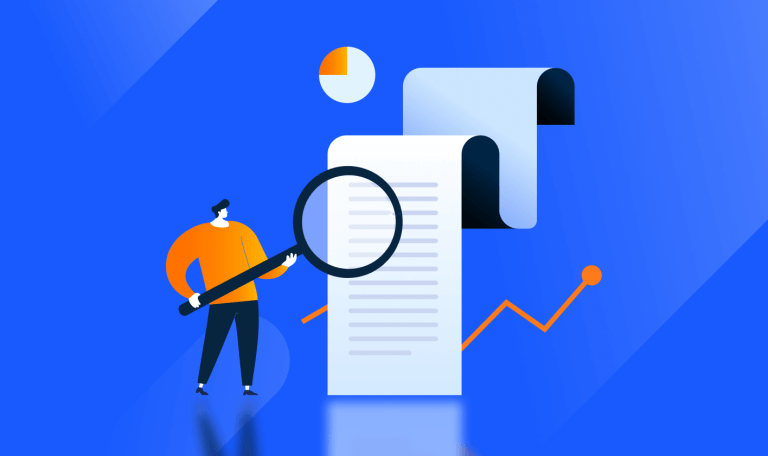
Desk research can help you make data-driven decisions, define or adapt strategies, and uncover untapped market potential to drive growth – when it’s done right!
Nowadays, we have all the information we need at our fingertips; but knowing where to find the right data quickly is key.
So, what is desk research? What does it involve, and how can Similarweb Research Intelligence help?
Let’s find out.

What is desk research?
Desk research is a type of market research that uses existing data to support or validate outcomes and conclusions. Also known as secondary research , it’s a cost-effective way to obtain relevant data from a broad range of channels.
How is desk research used?
From small start-ups to established businesses, doing desk research provides you with crucial insights into trends, competitors, and market size . Whatever you do, desk research can help with product positioning and guide data-driven business decisions that help you become the ultimate competitor and find new ways to grow.
According to the latest data on the Internet of Things , around 130 new devices connect to the web every second. Stats on the state of data show we create and consume data at an exponential rate–data interactions will only continue to rise.

Primary vs. secondary research – what’s the difference?
Most market research methods fall into either primary or secondary research. When we talk about desk research, we tend to focus only on secondary methods. However, most primary research can also be done remotely, from a desk.
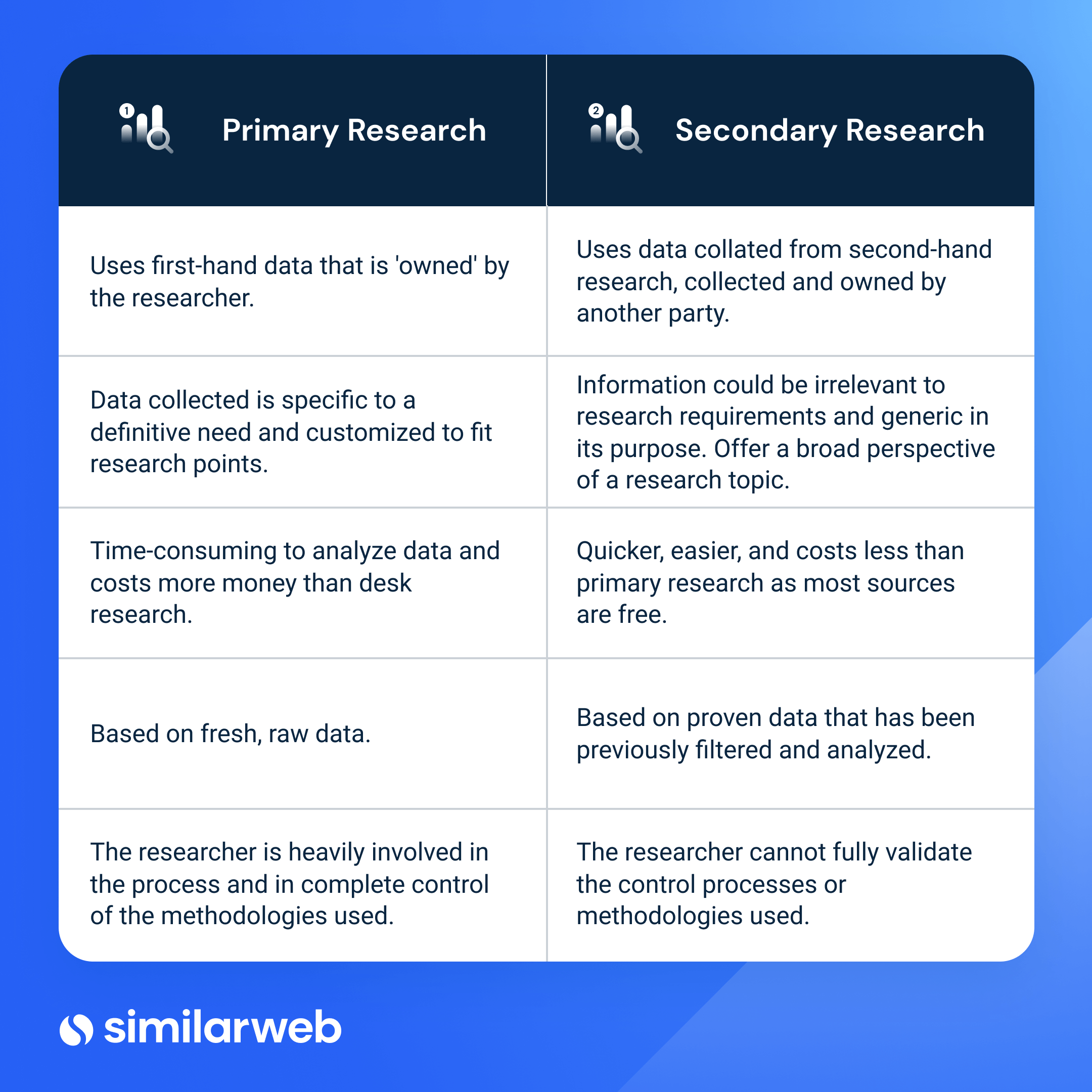
Primary research is self-conducted research that gathers data to answer questions. It usually involves going directly to a source, such as a customer or a prospect. Compared to secondary research, it takes longer, costs more, and demands more resources. Primary research methods include interviews, market research surveys , questionnaires, competitor reviews, market mapping , focus groups, etc.
Secondary research is the synthesis or summary of existing research using previously gained information from various sources. Most market research starts with secondary research: It aims to provide a researcher or analyst with a basis of knowledge formed from existing data. Secondary research methods include collecting data from the internet, government databases, reports, and academic journals, to name just a few.
Pros and cons of desk research
As with any type of market research, you need to choose the right method to deliver the best outcome for your research goal. Desk research is advantageous for several reasons, but it won’t always suit every market research project. Market research best practice tells us that we should use desk-based research before primary research – as this helps to reduce or refine the scope of the work before the second, more costly phase.
Here’s a summary of the pros and cons of desk research.
Advantages of desk-based research
Doing secondary market research is highly beneficial; here’s why.
- Low cost – most secondary research sources are low-to-no cost.
- Speed – as the data already exists, data collection is quick.
- Clarity – desk research drives & add-value to primary research actions.
- Scalability – due to the large datasets used in secondary research.
- Availability – pre-collected data is readily available to analyze.
- Insightful – get valuable insights and help resolve some initial research questions.
Disadvantages of desk-based research
As any good researcher will attest, it’s always good to look at a topic from every angle. Here are a few things to consider before starting any secondary research process.
- Out of-date data – consider if the coverage dates of the research are relevant. In a fast-moving market, having access to up-to-date information could be critical.
- Lack of perceived control over the data – secondary research is undertaken by a third party; as such, methodology controls need to be reviewed with caution.
- No exclusivity – desk research data is widely available and can be used by other researchers.
- Verification & interpretation – particularly when working with large data sets, it can take time to analyze and review to ensure the information is suitable for your research.
Types of desk-based research
Nowadays, you can do most market research from a desk. Here, I’ll focus solely on secondary research methods: Where finding and using the right resources is key. The data you use needs to be up-to-date and should always come from a trusted source.
Desk research methods – internal data resources
Before stepping into external research, look for any relevant internal sources. This data can often prove invaluable, and it’s a great place to start gathering insights that only you can see. The information is already yours, so aside from the fact it won’t cost a dime, it’s data your rivals won’t have access to.

Sources of internal information that can help you do desk research include:
- Historical campaign and sales analysis: Everything from website traffic and conversions through to sales. Accessible through your own analytics platform(s).
- Website and mobile application data: Your own platforms can also tell you where users are – such as the device split between mobile and desktop.
- Existing customer information: audience demographics , product use, and efficiency of service.
- Previous research conducted by other analysts: Even if the research seems unrelated, there could be indicative information within.
Desk research methods – external data resources
Using external data sources for desk research is an ideal way to get information about market trends, and explore a new topic.

- The internet: A virtual aggregator of all secondary research sources – always validate findings with credible sources.
- Commercial resources: Research associations and company reports usually cost money but give you data that’s specific to your industry/aim.
- Trade association reports: To see if there’s a trade association of interest, do a quick search online or use the Encyclopedia of Associations , the Directory of Associations , or the National Trade and Professional Associations Directory
- Industry Experts: Expert consultancy is an efficient way of getting information from someone who has ‘been there, done that.’ Also, consider ‘influencers.’
- Research associations & journals: Most research associations are independent and offer bespoke, specialized reports.
- Media coverage: TV, radio, newspapers, and magazines can often help uncover facts and relevant media stories related to your topic.
- Market research intelligence software: Platforms like Similarweb give you actionable insights into industry and competitors’ trends. With access to mobile app intelligence, you get a complete picture of the digital landscape.
- Government & non-government agencies: In the US, the biggest generator of data is the federal government. US Census Bureau , Congressional Research Service , US Government Publishing Office , US Small Business Administration , and the Department of Education . Most information from these sources is free.
- Local government sites: A reliable source to find data on population density or employment trends.
- Public library records: Access data via the Digital Public Library of America in the US or the National Archives in the UK.
- Competitor information: Sign-up for mailing lists, view comparison reports, and read online reviews.
- Educational institutions: Academic research papers and journals are well-researched. If you can find a relevant one, you’ll likely get solid data from credible sources.
How to choose the best type of desk research
With so many freely-available sources online for desk-based research; it’s easy to feel overwhelmed. The best guidance I can offer is to keep a list of key questions you are trying to answer with this research, and consider:
- What are you hoping to learn from your research?
- Why is this data relevant?
- Is there an action you can take from this information?
- How up-to-date is the data you are using?
Always keep the questions you’re trying to answer front of mind. It’ll help you stay focused and keep your desk research on the right track. Time and money will usually determine the right type of desk research to use, but, even then, it’s important to stay focussed on where you spend your time vs. the return on that investment.
Inspiration: This article outlines some of the best market research questions to ask.
How to do desk research in five steps
Follow these steps to guide you through doing desktop research:
1. Clearly define your research topic Identify your topic and its purpose, then list any relevant research attributes.
2. Select appropriate resources Make a list of sources that’ll provide relevant information for your research topic.
3. Look for existing data Once you’ve collated your research sources, look for internal and external data relevant to your research topic. Remember to only use data from authentic sources.
4. Collate, compare & assemble Next, you’ll need to collate all the data you’ve obtained, remove any duplication, and bring it together into a usable format.
5. Data analysis The final step of doing desk research is to analyze the data. At this point, you should be able to see if your research questions have been answered. If any questions remain unanswered, go back to step 2, and look for alternative resources that will help you get clearer insights.

Desk-based research tools
Online resources are by far your most valuable asset for doing secondary research. However, software like Similarweb Digital Intelligence , Google Analytics (GA), and Google Search Console (GSC) can save you time and give you a more visually-appealing view of relevant data.
My list of go-to tools for desk research includes:
- Google Analytics & Search Console – your own site’s performance and visitor stats.
- Similarweb Digital Research Intelligence – uncover market, industry & competitor trends across web, mobile, and apps.
- Tableau – data visualization for presenting your findings.
- Competitor data – on rival’s websites, newsletters, and social media accounts.
Read: The best market research tools of 2023
Note that GA and GSC are free to use but limited in terms of what you can see outside your own site. With Similarweb, you can access virtually limitless industry-wide data.
Stop Guessing, Start Analyzing
Get actionable insights for desk research here
How Similarweb helps with desk research
Here are just a few examples of how Similarweb Digital Research Intelligence can help you with secondary research.
- Benchmarking yourself against your industry – Benchmarking suite
- Understand how competitor websites and apps perform – Company research module
- Get a full picture of your industry – Market research & industry analysis tools
- Understand how apps are impacting your market – App Intelligence
- Analyze consumer behavior – Audience analysis tool
- Understand the complete customer journey – Consumer journey tracker
Using research intelligence tools will save you time and money while removing bias from the data – ultimately giving you clarity and a complete view of the digital world relevant to your research topic.
Success Story: See how Airbnb uses Similarweb to reveal growth opportunities in new markets .
Desk research examples with Similarweb
A good example of desk research in action is looking into an industry to uncover market leaders, trends, relevant search trends, and an overview of a complete industry. Using the market analysis module in Similarweb, you can find out exactly what’s happening in your market, and make data-driven decisions that’ll help you increase market share , and drive faster, more sustainable business growth.
For this particular desk research example, I chose the airline industry.
Let’s dive in.
Industry Overview
See a snapshot of industry traffic and engagement metrics . This data is typically based on Similarweb’s index of the top 100 websites in a chosen vertical. You can easily create a custom industry , allowing you to do competitive benchmarking against specific companies in your market.

Industry Leaders
Quickly see who is winning in an industry using the Market quadrant analysis graph and industry leaders table. Analyze top-performing websites in your vertical, and dive into their traffic and engagement performance to view bounce rates, visit duration, monthly visits, month-on-month changes, unique visitors, pages/visits, and traffic share .

Industry Trends
Analyze trends in near real-time so you can take action when it matters most–not a quarter later. Create a personalized view of your industry for in-depth analysis and make informed decisions that will help you grow your market share.

Marketing Channels
Access valuable traffic metrics and insights for each marketing channel. See data for direct, social, display ads, paid search, referrals, emails, and organic traffic channels and evaluate performance for each. Uncover opportunities to grow your own traffic share, evaluate engagement and quality of traffic, and identify trends over time.

Search Trends (within an industry)
Discover trending topics and emerging search terms in any industry. View what’s trending, search volume, % change, volume trend, and traffic leaders for both branded and non-branded search in your sector. Use these insights to get an understanding of market demand, search intent, and audience interests within a specific category, brand, or product.

Demographics
Gain crucial insights into the audiences visiting your website, your competitors’ websites, and your industry as a whole. See gender and age distribution across web, mobile, or combined traffic channels, and compare your demographics with that of your rivals.

The market analysis element of Similarweb will help you answer some of your most important research questions, such as:
- How a specific industry grew over time
- Who the top and emerging players are in your industry
- Which products or services are trending and/or what are consumers searching for
- What demographics are relevant to you, and your competitors
The app intelligence module completes the picture and gives you a broad view of the digital landscape across your market. You can quickly see how apps are impacting your industry, and look at download, engagement, installs, ranking, and more.

Here, I’m sticking with the airline industry to establish whether or not android or iOS is the best fit for a new app. Immediately, I can see there are between 1-1.5M monthly active users on iOS vs. an equivalent of around 350,000k on Android.
Like what you see? Take a tour of Similarweb for yourself.
Discover industry insights for desk research here
Wrapping up
Good desk research helps you quickly uncover key information that can shape and steer successful market research projects. When done right, you’ll be able to answer questions and discover crucial data about your industry, competitors, and key trends to consider while building a strategy for growth.
Asking the right research questions from the onset and keeping these at the forefront of your mind throughout will save time and help direct your market analysis in the right direction.
Is desk-based research free?
Depending on the method used, desktop research can be done for free. If you require industry or government agency reports, these often carry a charge but are more likely to be free from bias when compared to commercially produced reports that (sometimes) receive sponsorship.
Which businesses can utilize secondary desk research?
Desk-based research can uncover crucial insights into market trends, market sizing, and competitors. The information can be used by any size business to help guide strategic decision-making and help refine a product’s positioning.
Should you do secondary research before primary research?
Absolutely, yes. Secondary research should always come before primary or field research. The formative research phase helps pinpoint where more in-depth primary research is required. Desk research can also verify and support findings from field research but should not replace primary research–as they are each utilized under different circumstances.
Who does desk-based research?
Desk research can ‘technically’ be done by anyone, but it’s typically performed by a researcher, an analyst, or a marketing professional. Good market research has solid foundational data to drive critical business decisions. Experienced researchers and analysts are best-placed to spot opportunities, trends, and patterns when the stakes are this high.
So, while anybody can access secondary data free of charge, investing the necessary resources to do things right to get the most out of the process is essential.

by Liz March
Digital Research Specialist
Liz March has 15 years of experience in content creation. She enjoys the outdoors, F1, and reading, and is pursuing a BSc in Environmental Science.
Related Posts

Unlocking Consumer Behavior: What Makes Your Customers Tick?
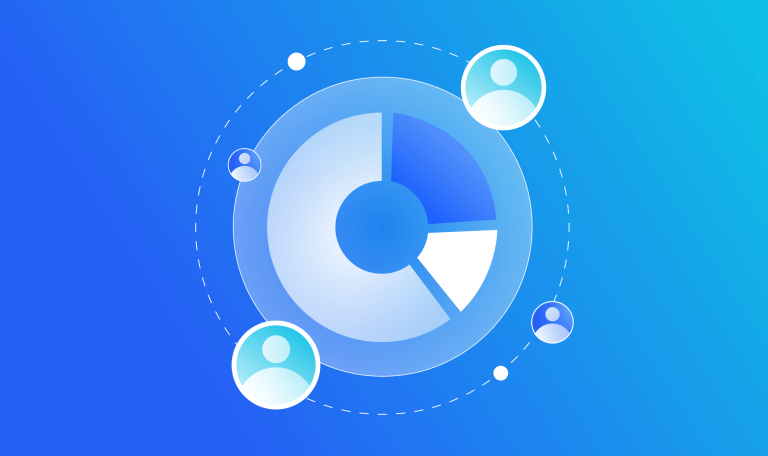
Customer Segmentation: Expert Tips on Understanding Your Audience

Market Demand 101: How to Gauge Demand for Your Products

Data Quality and Its Importance: Examples, Benefits, and Best Practices
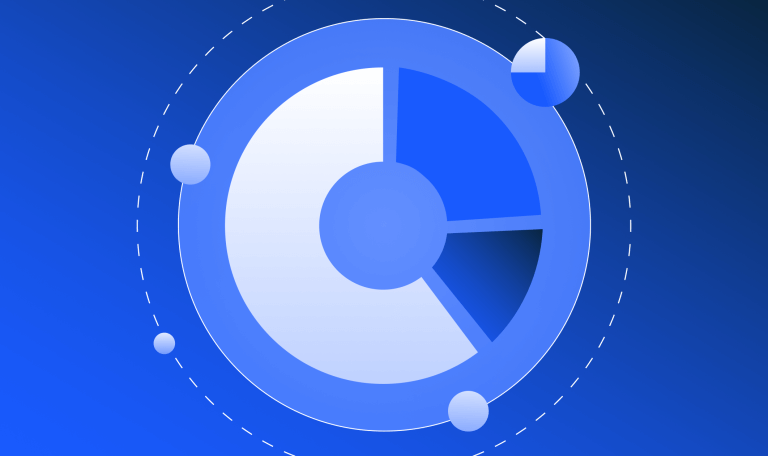
What Is Data Visualization? Your Complete Guide

What is Data-as-a-Service (DaaS), and Why Do You Need It?
Wondering what similarweb can do for your business.
Give it a try or talk to our insights team — don’t worry, it’s free!

- Study and research support
- Academic skills
Dissertation examples
Listed below are some of the best examples of research projects and dissertations from undergraduate and taught postgraduate students at the University of Leeds We have not been able to gather examples from all schools. The module requirements for research projects may have changed since these examples were written. Refer to your module guidelines to make sure that you address all of the current assessment criteria. Some of the examples below are only available to access on campus.
- Undergraduate examples
- Taught Masters examples
| These dissertations achieved a mark of 80 or higher:
|
| The following two examples have been annotated with academic comments. This is to help you understand why they achieved a good 2:1 mark but also, more importantly, how the marks could have been improved. Please read to help you make the most of the two examples. (Mark 68) (Mark 66) These final year projects achieved a mark of a high first:
For students undertaking a New Venture Creation (NVC) approach, please see the following Masters level examples:
|
|
|
|
|
| Projects which attained grades of over 70 or between 60 and 69 are indicated on the lists (accessible only by students and staff registered with School of Computer Science, when on campus).
|
| These are good quality reports but they are not perfect. You may be able to identify areas for improvement (for example, structure, content, clarity, standard of written English, referencing or presentation quality).
|
|
|
| The following examples have their marks and feedback included at the end of of each document.
The following examples have their feedback provided in a separate document.
|
|
|
| School of Media and Communication . |
|
|
| The following outstanding dissertation example PDFs have their marks denoted in brackets. (Mark 78) (Mark 91) (Mark 85) |
| This dissertation achieved a mark of 84: . |
| LUBS5530 Enterprise
|
| MSc Sustainability
|
|
|
|
|
|
. |
| The following outstanding dissertation example PDFs have their marks denoted in brackets. (Mark 70) (Mark 78) |
Subscribe to stay in the loop!
Desk research: how to conduct secondary research efficiently.

Prefer to read in Ebook format?
We will send you this complete Ebook to facilitate your reading.

If you're already familiar with UX Design, you know how essential research is to get to know the users of a product and understand their needs. Basically, there are two types of research: primary (where you collect information yourself by…

Sending the ebook
You will receive the ebook directly in your email a few minutes after confirming your request in the form below.
Ebook sending confirmed!
You will receive the ebook directly to your email in a few minutes.
Attention! Please check your spam folder if you cannot find the email in your main box .
Once you find the email in spam, move it to your main box and add the email [email protected] to your contact list, thus preventing other emails from the spam folder.
If you’re already familiar with UX Design, you know how essential research is to get to know the users of a product and understand their needs.
Basically, there are two types of research: primary (where you collect information yourself by surveys, interviews, observations, etc.) and secondary (searching for data compiled from previous findings). Desk Research falls into the second category.
Keep reading to know the best practices and a step-by-step to research successfully from your own desk!
What is Desk Research?
Desk Research is a method that explores data from existing documents and previous research — secondary data — to gather information over a particular topic.
It can provide solid arguments and help you elaborate a line of thought or fight for your ideas. And to do this, Desk Research relies on data already collected from other people.
Therefore, before spending time and money on field visits, prototypes, or usability tests, it’s wise to see what the world already knows that could be relevant for you and your team.
Why should you have a Desk Research?

Desk Research should be used as a research method before starting any Product Design project. It’s always constructive to see what previous studies and experts say about a particular topic, especially if you can take advantage of the information already out there.
Secondary research has the objective of any investigation: to provide information that could support and guide decision-making.
So in terms of objectives , using Desk Research is not that different from Primary Research.
Primary and Secondary Research
Primary and Secondary Research share the same object of study but are different in their process.
Primary research is first-hand research created and tailored to meet specific needs. The source of this kind of research is the individuals or organization behind the investigation.
Additionally, primary research uses raw data, which needs to be filtered and organized in order to be analyzed and reported.
On the other hand, secondary research collects data from previous research, so it doesn’t belong to anyone.
Needless to say, primary research demands more time and money, while secondary research is cheaper and faster to gather results.
Desk Research: where to look?
Since Desk Research relies on other people’s findings, pay close attention to the sources and always run check facts.
There are all kinds of information online so we need to be diligent to filter good quality material.
Also, the internet is not the only possible source of information to carry out Desk Research. You may want to check:
- Existing products in the market;
- Your own organization records;
- Academic records;
- Government organizations;
- Relevant NGO’S.
Products in the market

An insightful resource is observing products that are already on the market.
Furthermore, evaluate the products that your own company has already launched.
Look at the concepts, interactions, and experiences these products provide.
Company records

Go through research and analysis your own company has conducted in the past.
This type of information is extremely valuable to understand ideas, opportunities, and difficulties the company has faced in the past and that can serve as a starting point for your own proposal.
Investigate further, look at the people in charge of these data, and if possible, try to talk to them directly and exchange knowledge about what they have found out, and what you intend to do.
Most of the time, internal research helps to clarify essential points, due to the fact they were applied in the same context, in the same market segment.
External Sources
External research sources are perhaps the most common and widely known. However, as we already mentioned, it’s important to understand which sources are reliable.
With that in mind, we compiled a few aspects for your consideration:
Data available from the Web

Internet is the most popular and accessible source of information there is. With just one click you can download any data or research you want.
Despite much information being available for free, that are company sites that sell information and reports.
If you’re digging the internet for free content, check reliable websites with known expertise in the field.
For example, in the case of research and data about usability, it’s common to rely on data from the Nielsen Norman Group . The consulting firm is an expert on UX, has authority and reputation in the market.
In times when the internet rules the era of information, libraries end up being underestimated. But they can be excellent sources for desk research.
Of course, recent studies will most likely be found online but there may be old interesting research published only on paper. So, apart from books, beware to check articles, papers, and research from a wide range of authors.
Don’t dismiss studies that are not recent. Even if research was carried out a couple of years ago, it can still be extremely relevant and serve to support your ideas, provide you answers, questions, or insights.
Human behavior, for example, changes very slowly, so studies that focus on that, won’t lose its “expiration date” so soon.
Academic Records
In addition to using university libraries, you can search for more specific research conducted by students or professors at the institutions.
As a general rule, educational institutions conduct a variety of primary research that can be requested and used as Desk Research by companies.
Desk Research can also rely on newspapers, magazines, and even news transmitted on TV or radio.
However, it is always important to be diligent when using this type of information because it is generally superficial and informational for the public.
Relying solely on media data can bring biased and shallow information. Nevertheless, it can be a good start for your Desk Research.
A step-by-step to Desk Research
It’s wise to consider a couple of measures to ensure the quality and efficiency of your Desk Research.
So we’ll describe a step-by-step to help you in your endeavor.
Of course, as you gain experience with this research method, you can adapt each step to make it more coherent to the way you work. But be sure to go through them.
1) Define your goal

Before starting the research, identify its purpose: What do you want to know? Which question do you need to answer?
Without a pre-determined objective, you won’t be a good judge whether the information you’re coming across is relevant or not for your project.
Establishing objectives is all about setting a clear path to the questions you want to answer; this will ground you and help you stay focused, so you don’t end up wasting precious time.
Your research objectives can revolve around:
- a number: like seeking to find five articles from different sources or collecting information from 20 user interviews;
- an assumption: here, your goal is to find arguments and information that support your hypothesis. However, make sure to also look for information that may disprove your statement.
2) Map your sources
Will you only use the internet? Or will you also go to public libraries? Are you going to talk to people in your company too?
Mapping the sources you intend to use saves time and prevents you from losing focus. At this stage, identify which sources are more likely to bring you the best results.
Remember to have a plan B, too. For example, if you can’t find all the information on websites, find out what the next trusted source you should be using.
3) Set a deadline

Working with deadlines is another strategy to maintain focus during research.
Determine whether you will invest hours, days, or a few weeks to carry out your Desk Research.
However, keep in mind that we tend to use up all the time assigned to us. So keep it a tight schedule and propose realistic deadlines to help your productivity and your research efficiency.
4) Hands-on
It’s time to carry out your research, keeping in mind: your objective, the deadline, and reliable sources.
Use whichever method you think is best to identify and gather the necessary information: summarizing, filing, highlighting, or copying.
For instance, you can put all your findings on an online whiteboard (like miro.com ).
Remember to seek different views on the same problem. Don’t fall into so-called confirmation bias, where you only collect data that confirms your assumption.
Look for information that may contradict the initial ideas to bring other perspectives that will be essential upon data analysis.
5) Analyze data

A crucial step of Desk Research is analyzing the data collected. First, carefully read the information and review all the findings. Then, go deeper into your study: compare the results of different sources and define the importance of each one.
Next, check if your research answered the questions and met the initially proposed objective.
If not, redo the research or check if the objective is coherent or needs to be changed.
In this step, you should also formalize the information in a way it’s presentable to others; you can write a report or organize your findings into a presentation.
Advantages and Disadvantages of Desk Research
- Secondary Research is cheaper than Primary Research. Thus, if your company does not have the budget to conduct interviews and do field observations, desk research is a good solution;
- Desk Research also has a time advantage. Compared to primary Research, secondary Research is much faster to conduct;
- The wide availability of information makes Desk Research easier to execute.
Disadvantages
- The challenge of finding reliable sources. If the research is done over the internet, it is necessary to be very careful with websites and articles you base upon;
- It’s not always possible to find reports and research that is up-to-date and include the most recent information;
- Because it is faster and cheaper, Desk Research can create the false impression that it is the best method to use. However, it is essential to understand that primary research is also relevant and has more focus and objectivity to meet the company’s needs.
Every method, or tool, has its pros and cons. Therefore, you need to assess where you are to decide if Desk Research is the right resource for your project. And, of course, it can always – and should – serve as a starting point for Primary Research.
- The Beginner’s Guide to Desk Research
- Desk research: the what, why and how
- How to use desk research to kick-start your design process
- Secondary Research- Definition, Methods and Examples.
- Secondary Research
Don't forget to like and share if you enjoyed this content! This small gesture helps us a lot! Feel free to continue browsing, and if you'd like to stay up-to-date, sign up for our newsletter !

Usability Test: How To Prepare And Conduct One?
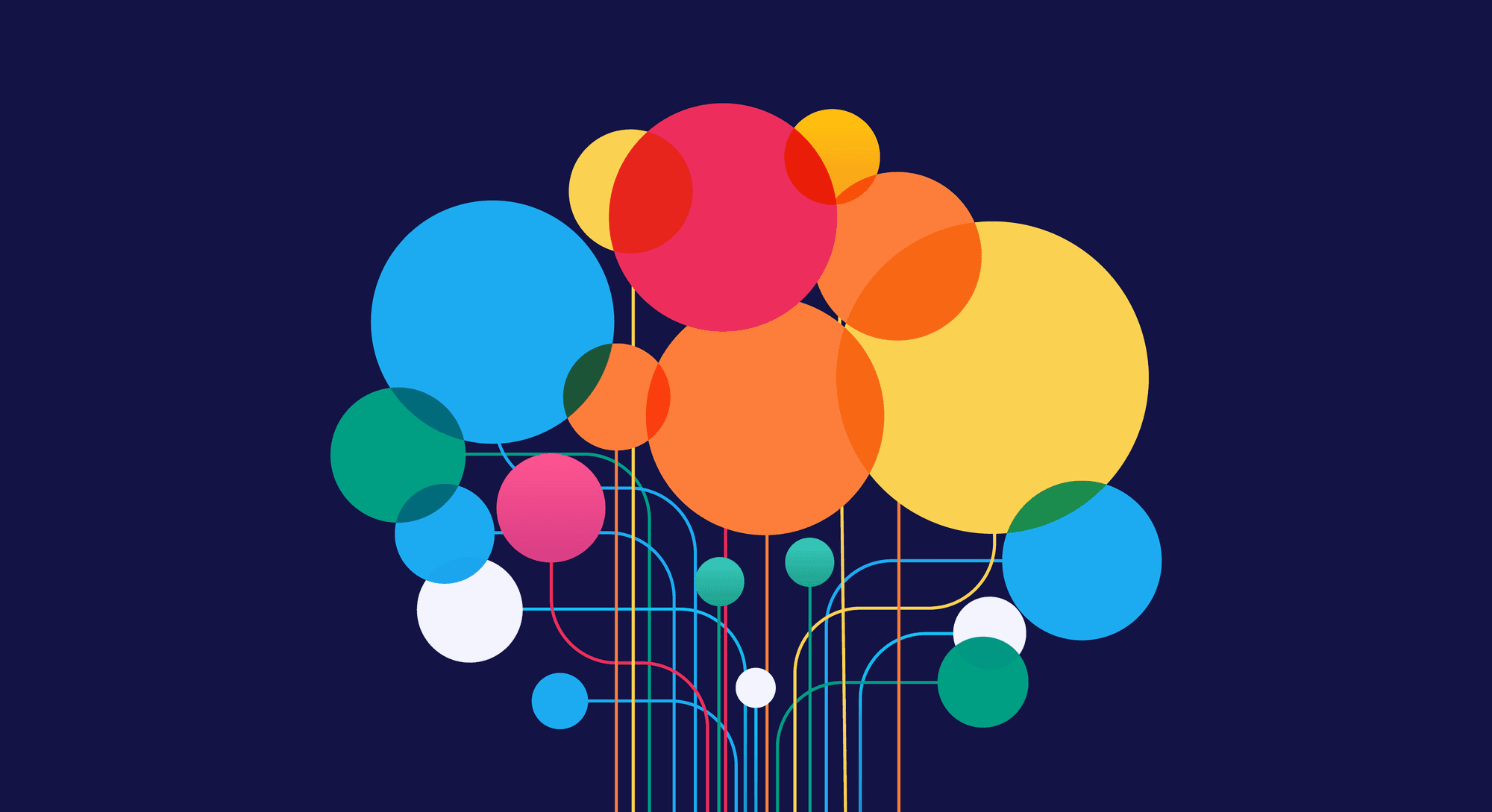
Tree Testing: How Easily Can Users Find The Information They Need?

User Interview: Keys to Gather Insightful Information

Career in Product Design: Self-Awareness to Transform Your Journey and Growth

Career in UX: How to Develop Emotional Resilience

Designer 360: The Epic Path To Be Successful In Design
We are proud to have people from our community hired every month by great companies, in countries such as Brazil, USA, UK, Ireland, Germany, Netherlands, Spain, Portugal, Austria, Czech Rep., New Zealand, and Canada.
Privacy Overview
PhD Assistance
A comprehensive guide to desk-based research: unlocking secondary data sources.
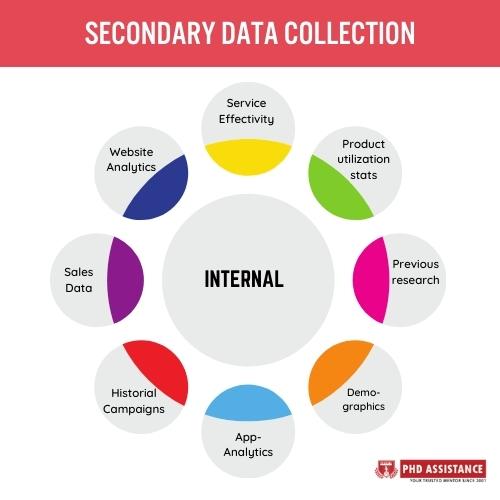
Introduction
What is Desk-based research?
Desk research is a type of study based on material published in reports and similar materials available in public libraries, websites, data acquired from previously conducted surveys, and so on. Some businesses also keep data that can be utilized for the study. It is a research approach that uses already secondary data collection methods . These are gathered and summarized to improve the investigation’s overall efficacy.
Desk-based research, also known as secondary research, involves utilizing existing sources of information to gather data for your PhD thesis . This type of research can be a valuable complement to primary research, as it allows you to explore existing knowledge, gain insights, and support or refute existing theories.
Desk-based research examples:
Desk research is a popular alternative for businesses and organizations since it is a low-cost approach. Not everyone can afford to pay significant amounts of money to research design and gather data. That is why it is also known as “documentary research.”
Here’s a comprehensive guide to conducting desk-based research and unlocking secondary data sources for your PhD thesis:
- Refine your research questions : Clearly define your research questions or objectives. This will help you focus your desk-based research efforts and identify the specific types of data you need to collect.
- Identify relevant sources : Determine the types of sources that are most suitable for your research. These can include academic journals, books, conference proceedings, government reports, industry publications, statistical databases, websites, and other scholarly resources. Consider both online and offline sources.
- Develop search strategies : Plan your search strategies to locate relevant information effectively. Start by creating a list of keywords and synonyms related to your research topic. Use these keywords to search databases, library catalogues, and search engines. Consider using Boolean operators (AND, OR, NOT) to effectively refine your searches and combine keywords.
- Utilize academic databases : Academic databases such as JSTOR, PubMed , Scopus, Web of Science, and Google Scholar are excellent resources for finding scholarly articles and papers. These databases allow you to search across various disciplines and access a wide range of academic publications.
- Explore institutional libraries : Visit your university or other institutions to access books, thesis, dissertations , and other relevant materials. Librarians can guide you on using the library catalog effectively and help you navigate available resources.
- Access government and organizational reports : Government agencies, research institutes, and organizations often publish reports, white papers, and studies that can provide valuable data and insights. To access these reports, visit relevant websites and explore their research or publications sections.
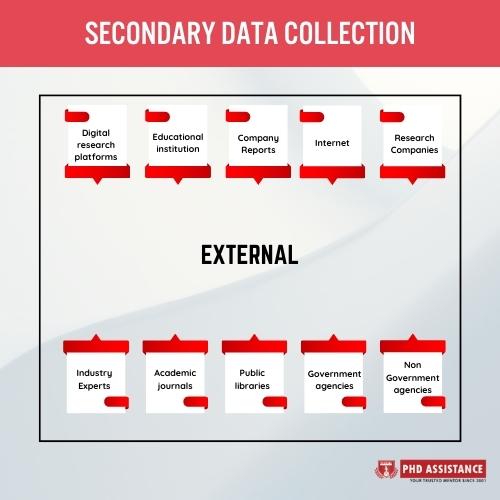
- Evaluate source credibility : Assess the credibility and reliability of the sources you find. Consider factors such as the author’s expertise, the publication’s reputation, the presence of peer review, and the recency of the information. Use academic judgment to determine the trustworthiness of the sources.
- Extract and organize data : Extract relevant data from the sources you collect. This can include quantitative data, qualitative findings, theories, arguments, or conceptual frameworks. Create a system to organize and store your extracted secondary data collection, such as a spreadsheet or a reference management tool like Zotero or Mendeley.
- Check out our Sample data collection for the Project to see how the secondary data collection is constructed.
- Analyze and synthesize the data : Analyze the secondary data in the research methodology you have gathered and synthesize the information to support your research questions. Identify patterns, themes, and gaps in the existing literature . Compare and contrast different viewpoints and theories, and critically evaluate the strength of the evidence.
- Integrate secondary data with primary research: If you are conducting primary research alongside your desk-based research, integrate the types of secondary data collection into your analysis. Use the secondary data to provide context, compare findings, or support your arguments.
- Cite and reference your sources : Properly cite and reference all the sources you have used in your desk-based research methodology dissertation. Follow the appropriate citation style (e.g., APA, MLA, Chicago) as per your institution’s guidelines. Maintain accurate records of your references to avoid plagiarism and facilitate the writing of your thesis.
Desk-based research provides a foundation of knowledge and can significantly enhance the quality and depth of your PhD thesis. However, it is important to balance secondary research with primary research to contribute original insights and perspectives to your field of study.
- Check out our study guide to learn more about Secondary data collection. How to collect data for your PhD Thesis?
Qualitative desk-based research leverages existing data sources to access diverse information without primary data collection . Researchers gain insights into historical trends, longitudinal studies, and cross-comparisons by analyzing academic journals, government reports, industry publications, and online databases. However, caution must be exercised to ensure data credibility and relevance. Skilled researchers can make well-founded, evidence-based conclusions in any field.
About PhD Assistance
Ph.D. Assistance is completely aware that data collecting is the most critical phase in doing research and can significantly impact the results or conclusion. Our global staff of PhD experts assists you in data collecting based on the study topic and data source. Because PhD experts from across the world educate our data-collecting staff, their implicit and explicit expertise has enabled them to gather any survey (personal interview, mail, in-house), focus groups, etc. and translate it into a more accessible format, therefore assisting decision-making.
- Guerin, Benoit, Barbara Janta, and Anke van Gorp. “Desk-based research and literature review.” Evaluating interventions that prevent or counter violent extremism 63 (2018).
- Bassot, Barbara. Doing qualitative desk-based research: a practical guide to writing an excellent dissertation . Policy Press, 2022.
- desk-based dissertation examples
- desk-based research examples
- desk-based research methodology
- desk-based research methodology dissertation
- qualitative desk-based research
- secondary data collection
- Secondary Data Collection Methods
- secondary data in research methodology
- secondary data sources examples
- secondary sources of data collection
- types of secondary data collection
Quick Contact

- Adversial Attacks
- Artificial Intelligence
- Artificial Intelligence (AI) and ML ( Machine Learning )
- Big Data Analysis
- Business and Management
- Categories of Research methodology – PhDAssistance
- Category of Research Proposal Services
- coding & algorithm
- Computer Data Science
- Category of Machine Learning – PhDassistance
- Computer Science/Research writing/Manuscript
- Course Work Service
- Data Analytics
- Data Processing
- Deep Networks
- Dissertation Statistics
- economics dissertation
- Editing Services
- Electrical Engineering Category
- Engineering & Technology
- finance dissertation writing
- Gap Identification
- Healthcare Dissertation Writing
- Intrusion-detection-system
- journals publishing
- Life Science Dissertation writing services
- literature review service
- Machine Learning
- medical thesis writing
- Peer review
- PhD Computer Programming
- PhD Dissertation
- PhD dissertation Writing
- Phd Journal Manuscript
- Annotated Bibliography
- PhD Publication Support
- Phd thesis writing services
- Phd Topic Selection
- Categories of PhdAssistance Dissertation
- Power Safety
- problem identification
- Quantitative Analysis
- quantitative research
- Recent Trends
- Referencing and Formatting
- Research Gap
- research journals
- Research Methodology
- research paper
- Research Proposal Service
- secondary Data collection
- Statistical Consulting Services
- Uncategorized
Have a language expert improve your writing
Run a free plagiarism check in 10 minutes, generate accurate citations for free.
- Knowledge Base
- Starting the research process
How to Choose a Dissertation Topic | 8 Steps to Follow
Published on November 11, 2022 by Shona McCombes and Tegan George. Revised on November 20, 2023.
Choosing your dissertation topic is the first step in making sure your research goes as smoothly as possible. When choosing a topic, it’s important to consider:
- Your institution and department’s requirements
- Your areas of knowledge and interest
- The scientific, social, or practical relevance
- The availability of data and resources
- The timeframe of your dissertation
- The relevance of your topic
You can follow these steps to begin narrowing down your ideas.
Table of contents
Step 1: check the requirements, step 2: choose a broad field of research, step 3: look for books and articles, step 4: find a niche, step 5: consider the type of research, step 6: determine the relevance, step 7: make sure it’s plausible, step 8: get your topic approved, other interesting articles, frequently asked questions about dissertation topics.
The very first step is to check your program’s requirements. This determines the scope of what it is possible for you to research.
- Is there a minimum and maximum word count?
- When is the deadline?
- Should the research have an academic or a professional orientation?
- Are there any methodological conditions? Do you have to conduct fieldwork, or use specific types of sources?
Some programs have stricter requirements than others. You might be given nothing more than a word count and a deadline, or you might have a restricted list of topics and approaches to choose from. If in doubt about what is expected of you, always ask your supervisor or department coordinator.
Start by thinking about your areas of interest within the subject you’re studying. Examples of broad ideas include:
- Twentieth-century literature
- Economic history
- Health policy
To get a more specific sense of the current state of research on your potential topic, skim through a few recent issues of the top journals in your field. Be sure to check out their most-cited articles in particular. For inspiration, you can also search Google Scholar , subject-specific databases , and your university library’s resources.
As you read, note down any specific ideas that interest you and make a shortlist of possible topics. If you’ve written other papers, such as a 3rd-year paper or a conference paper, consider how those topics can be broadened into a dissertation.
After doing some initial reading, it’s time to start narrowing down options for your potential topic. This can be a gradual process, and should get more and more specific as you go. For example, from the ideas above, you might narrow it down like this:
- Twentieth-century literature Twentieth-century Irish literature Post-war Irish poetry
- Economic history European economic history German labor union history
- Health policy Reproductive health policy Reproductive rights in South America
All of these topics are still broad enough that you’ll find a huge amount of books and articles about them. Try to find a specific niche where you can make your mark, such as: something not many people have researched yet, a question that’s still being debated, or a very current practical issue.
At this stage, make sure you have a few backup ideas — there’s still time to change your focus. If your topic doesn’t make it through the next few steps, you can try a different one. Later, you will narrow your focus down even more in your problem statement and research questions .
There are many different types of research , so at this stage, it’s a good idea to start thinking about what kind of approach you’ll take to your topic. Will you mainly focus on:
- Collecting original data (e.g., experimental or field research)?
- Analyzing existing data (e.g., national statistics, public records, or archives)?
- Interpreting cultural objects (e.g., novels, films, or paintings)?
- Comparing scholarly approaches (e.g., theories, methods, or interpretations)?
Many dissertations will combine more than one of these. Sometimes the type of research is obvious: if your topic is post-war Irish poetry, you will probably mainly be interpreting poems. But in other cases, there are several possible approaches. If your topic is reproductive rights in South America, you could analyze public policy documents and media coverage, or you could gather original data through interviews and surveys .
You don’t have to finalize your research design and methods yet, but the type of research will influence which aspects of the topic it’s possible to address, so it’s wise to consider this as you narrow down your ideas.
It’s important that your topic is interesting to you, but you’ll also have to make sure it’s academically, socially or practically relevant to your field.
- Academic relevance means that the research can fill a gap in knowledge or contribute to a scholarly debate in your field.
- Social relevance means that the research can advance our understanding of society and inform social change.
- Practical relevance means that the research can be applied to solve concrete problems or improve real-life processes.
The easiest way to make sure your research is relevant is to choose a topic that is clearly connected to current issues or debates, either in society at large or in your academic discipline. The relevance must be clearly stated when you define your research problem .
Before you make a final decision on your topic, consider again the length of your dissertation, the timeframe in which you have to complete it, and the practicalities of conducting the research.
Will you have enough time to read all the most important academic literature on this topic? If there’s too much information to tackle, consider narrowing your focus even more.
Will you be able to find enough sources or gather enough data to fulfil the requirements of the dissertation? If you think you might struggle to find information, consider broadening or shifting your focus.
Do you have to go to a specific location to gather data on the topic? Make sure that you have enough funding and practical access.
Last but not least, will the topic hold your interest for the length of the research process? To stay motivated, it’s important to choose something you’re enthusiastic about!
Most programmes will require you to submit a brief description of your topic, called a research prospectus or proposal .
Remember, if you discover that your topic is not as strong as you thought it was, it’s usually acceptable to change your mind and switch focus early in the dissertation process. Just make sure you have enough time to start on a new topic, and always check with your supervisor or department.
If you want to know more about the research process , methodology , research bias , or statistics , make sure to check out some of our other articles with explanations and examples.
Methodology
- Sampling methods
- Simple random sampling
- Stratified sampling
- Cluster sampling
- Likert scales
- Reproducibility
Statistics
- Null hypothesis
- Statistical power
- Probability distribution
- Effect size
- Poisson distribution
Research bias
- Optimism bias
- Cognitive bias
- Implicit bias
- Hawthorne effect
- Anchoring bias
- Explicit bias
Formulating a main research question can be a difficult task. Overall, your question should contribute to solving the problem that you have defined in your problem statement .
However, it should also fulfill criteria in three main areas:
- Researchability
- Feasibility and specificity
- Relevance and originality
All research questions should be:
- Focused on a single problem or issue
- Researchable using primary and/or secondary sources
- Feasible to answer within the timeframe and practical constraints
- Specific enough to answer thoroughly
- Complex enough to develop the answer over the space of a paper or thesis
- Relevant to your field of study and/or society more broadly

You can assess information and arguments critically by asking certain questions about the source. You can use the CRAAP test , focusing on the currency , relevance , authority , accuracy , and purpose of a source of information.
Ask questions such as:
- Who is the author? Are they an expert?
- Why did the author publish it? What is their motivation?
- How do they make their argument? Is it backed up by evidence?
A dissertation prospectus or proposal describes what or who you plan to research for your dissertation. It delves into why, when, where, and how you will do your research, as well as helps you choose a type of research to pursue. You should also determine whether you plan to pursue qualitative or quantitative methods and what your research design will look like.
It should outline all of the decisions you have taken about your project, from your dissertation topic to your hypotheses and research objectives , ready to be approved by your supervisor or committee.
Note that some departments require a defense component, where you present your prospectus to your committee orally.
The best way to remember the difference between a research plan and a research proposal is that they have fundamentally different audiences. A research plan helps you, the researcher, organize your thoughts. On the other hand, a dissertation proposal or research proposal aims to convince others (e.g., a supervisor, a funding body, or a dissertation committee) that your research topic is relevant and worthy of being conducted.
Cite this Scribbr article
If you want to cite this source, you can copy and paste the citation or click the “Cite this Scribbr article” button to automatically add the citation to our free Citation Generator.
McCombes, S. & George, T. (2023, November 20). How to Choose a Dissertation Topic | 8 Steps to Follow. Scribbr. Retrieved August 19, 2024, from https://www.scribbr.com/research-process/dissertation-topic/
Is this article helpful?
Shona McCombes
Other students also liked, how to define a research problem | ideas & examples, what is a research design | types, guide & examples, writing strong research questions | criteria & examples, what is your plagiarism score.
Have a language expert improve your writing
Run a free plagiarism check in 10 minutes, automatically generate references for free.
- Knowledge Base
- Dissertation
- What Is a Research Methodology? | Steps & Tips
What Is a Research Methodology? | Steps & Tips
Published on 25 February 2019 by Shona McCombes . Revised on 10 October 2022.
Your research methodology discusses and explains the data collection and analysis methods you used in your research. A key part of your thesis, dissertation, or research paper, the methodology chapter explains what you did and how you did it, allowing readers to evaluate the reliability and validity of your research.
It should include:
- The type of research you conducted
- How you collected and analysed your data
- Any tools or materials you used in the research
- Why you chose these methods
- Your methodology section should generally be written in the past tense .
- Academic style guides in your field may provide detailed guidelines on what to include for different types of studies.
- Your citation style might provide guidelines for your methodology section (e.g., an APA Style methods section ).
Instantly correct all language mistakes in your text
Be assured that you'll submit flawless writing. Upload your document to correct all your mistakes.

Table of contents
How to write a research methodology, why is a methods section important, step 1: explain your methodological approach, step 2: describe your data collection methods, step 3: describe your analysis method, step 4: evaluate and justify the methodological choices you made, tips for writing a strong methodology chapter, frequently asked questions about methodology.
The only proofreading tool specialized in correcting academic writing
The academic proofreading tool has been trained on 1000s of academic texts and by native English editors. Making it the most accurate and reliable proofreading tool for students.

Correct my document today
Your methods section is your opportunity to share how you conducted your research and why you chose the methods you chose. It’s also the place to show that your research was rigorously conducted and can be replicated .
It gives your research legitimacy and situates it within your field, and also gives your readers a place to refer to if they have any questions or critiques in other sections.
You can start by introducing your overall approach to your research. You have two options here.
Option 1: Start with your “what”
What research problem or question did you investigate?
- Aim to describe the characteristics of something?
- Explore an under-researched topic?
- Establish a causal relationship?
And what type of data did you need to achieve this aim?
- Quantitative data , qualitative data , or a mix of both?
- Primary data collected yourself, or secondary data collected by someone else?
- Experimental data gathered by controlling and manipulating variables, or descriptive data gathered via observations?
Option 2: Start with your “why”
Depending on your discipline, you can also start with a discussion of the rationale and assumptions underpinning your methodology. In other words, why did you choose these methods for your study?
- Why is this the best way to answer your research question?
- Is this a standard methodology in your field, or does it require justification?
- Were there any ethical considerations involved in your choices?
- What are the criteria for validity and reliability in this type of research ?
Once you have introduced your reader to your methodological approach, you should share full details about your data collection methods .
Quantitative methods
In order to be considered generalisable, you should describe quantitative research methods in enough detail for another researcher to replicate your study.
Here, explain how you operationalised your concepts and measured your variables. Discuss your sampling method or inclusion/exclusion criteria, as well as any tools, procedures, and materials you used to gather your data.
Surveys Describe where, when, and how the survey was conducted.
- How did you design the questionnaire?
- What form did your questions take (e.g., multiple choice, Likert scale )?
- Were your surveys conducted in-person or virtually?
- What sampling method did you use to select participants?
- What was your sample size and response rate?
Experiments Share full details of the tools, techniques, and procedures you used to conduct your experiment.
- How did you design the experiment ?
- How did you recruit participants?
- How did you manipulate and measure the variables ?
- What tools did you use?
Existing data Explain how you gathered and selected the material (such as datasets or archival data) that you used in your analysis.
- Where did you source the material?
- How was the data originally produced?
- What criteria did you use to select material (e.g., date range)?
The survey consisted of 5 multiple-choice questions and 10 questions measured on a 7-point Likert scale.
The goal was to collect survey responses from 350 customers visiting the fitness apparel company’s brick-and-mortar location in Boston on 4–8 July 2022, between 11:00 and 15:00.
Here, a customer was defined as a person who had purchased a product from the company on the day they took the survey. Participants were given 5 minutes to fill in the survey anonymously. In total, 408 customers responded, but not all surveys were fully completed. Due to this, 371 survey results were included in the analysis.
Qualitative methods
In qualitative research , methods are often more flexible and subjective. For this reason, it’s crucial to robustly explain the methodology choices you made.
Be sure to discuss the criteria you used to select your data, the context in which your research was conducted, and the role you played in collecting your data (e.g., were you an active participant, or a passive observer?)
Interviews or focus groups Describe where, when, and how the interviews were conducted.
- How did you find and select participants?
- How many participants took part?
- What form did the interviews take ( structured , semi-structured , or unstructured )?
- How long were the interviews?
- How were they recorded?
Participant observation Describe where, when, and how you conducted the observation or ethnography .
- What group or community did you observe? How long did you spend there?
- How did you gain access to this group? What role did you play in the community?
- How long did you spend conducting the research? Where was it located?
- How did you record your data (e.g., audiovisual recordings, note-taking)?
Existing data Explain how you selected case study materials for your analysis.
- What type of materials did you analyse?
- How did you select them?
In order to gain better insight into possibilities for future improvement of the fitness shop’s product range, semi-structured interviews were conducted with 8 returning customers.
Here, a returning customer was defined as someone who usually bought products at least twice a week from the store.
Surveys were used to select participants. Interviews were conducted in a small office next to the cash register and lasted approximately 20 minutes each. Answers were recorded by note-taking, and seven interviews were also filmed with consent. One interviewee preferred not to be filmed.
Mixed methods
Mixed methods research combines quantitative and qualitative approaches. If a standalone quantitative or qualitative study is insufficient to answer your research question, mixed methods may be a good fit for you.
Mixed methods are less common than standalone analyses, largely because they require a great deal of effort to pull off successfully. If you choose to pursue mixed methods, it’s especially important to robustly justify your methods here.
Prevent plagiarism, run a free check.
Next, you should indicate how you processed and analysed your data. Avoid going into too much detail: you should not start introducing or discussing any of your results at this stage.
In quantitative research , your analysis will be based on numbers. In your methods section, you can include:
- How you prepared the data before analysing it (e.g., checking for missing data , removing outliers , transforming variables)
- Which software you used (e.g., SPSS, Stata or R)
- Which statistical tests you used (e.g., two-tailed t test , simple linear regression )
In qualitative research, your analysis will be based on language, images, and observations (often involving some form of textual analysis ).
Specific methods might include:
- Content analysis : Categorising and discussing the meaning of words, phrases and sentences
- Thematic analysis : Coding and closely examining the data to identify broad themes and patterns
- Discourse analysis : Studying communication and meaning in relation to their social context
Mixed methods combine the above two research methods, integrating both qualitative and quantitative approaches into one coherent analytical process.
Above all, your methodology section should clearly make the case for why you chose the methods you did. This is especially true if you did not take the most standard approach to your topic. In this case, discuss why other methods were not suitable for your objectives, and show how this approach contributes new knowledge or understanding.
In any case, it should be overwhelmingly clear to your reader that you set yourself up for success in terms of your methodology’s design. Show how your methods should lead to results that are valid and reliable, while leaving the analysis of the meaning, importance, and relevance of your results for your discussion section .
- Quantitative: Lab-based experiments cannot always accurately simulate real-life situations and behaviours, but they are effective for testing causal relationships between variables .
- Qualitative: Unstructured interviews usually produce results that cannot be generalised beyond the sample group , but they provide a more in-depth understanding of participants’ perceptions, motivations, and emotions.
- Mixed methods: Despite issues systematically comparing differing types of data, a solely quantitative study would not sufficiently incorporate the lived experience of each participant, while a solely qualitative study would be insufficiently generalisable.
Remember that your aim is not just to describe your methods, but to show how and why you applied them. Again, it’s critical to demonstrate that your research was rigorously conducted and can be replicated.
1. Focus on your objectives and research questions
The methodology section should clearly show why your methods suit your objectives and convince the reader that you chose the best possible approach to answering your problem statement and research questions .
2. Cite relevant sources
Your methodology can be strengthened by referencing existing research in your field. This can help you to:
- Show that you followed established practice for your type of research
- Discuss how you decided on your approach by evaluating existing research
- Present a novel methodological approach to address a gap in the literature
3. Write for your audience
Consider how much information you need to give, and avoid getting too lengthy. If you are using methods that are standard for your discipline, you probably don’t need to give a lot of background or justification.
Regardless, your methodology should be a clear, well-structured text that makes an argument for your approach, not just a list of technical details and procedures.
Methodology refers to the overarching strategy and rationale of your research. Developing your methodology involves studying the research methods used in your field and the theories or principles that underpin them, in order to choose the approach that best matches your objectives.
Methods are the specific tools and procedures you use to collect and analyse data (e.g. interviews, experiments , surveys , statistical tests ).
In a dissertation or scientific paper, the methodology chapter or methods section comes after the introduction and before the results , discussion and conclusion .
Depending on the length and type of document, you might also include a literature review or theoretical framework before the methodology.
Quantitative research deals with numbers and statistics, while qualitative research deals with words and meanings.
Quantitative methods allow you to test a hypothesis by systematically collecting and analysing data, while qualitative methods allow you to explore ideas and experiences in depth.
A sample is a subset of individuals from a larger population. Sampling means selecting the group that you will actually collect data from in your research.
For example, if you are researching the opinions of students in your university, you could survey a sample of 100 students.
Statistical sampling allows you to test a hypothesis about the characteristics of a population. There are various sampling methods you can use to ensure that your sample is representative of the population as a whole.
Cite this Scribbr article
If you want to cite this source, you can copy and paste the citation or click the ‘Cite this Scribbr article’ button to automatically add the citation to our free Reference Generator.
McCombes, S. (2022, October 10). What Is a Research Methodology? | Steps & Tips. Scribbr. Retrieved 19 August 2024, from https://www.scribbr.co.uk/thesis-dissertation/methodology/
Is this article helpful?
Shona McCombes
Other students also liked, how to write a dissertation proposal | a step-by-step guide, what is a literature review | guide, template, & examples, what is a theoretical framework | a step-by-step guide.

Home > Theses and Dissertations
Theses and Dissertations
Dissertations
Archived Theses
Archived Dissertations
Advanced Search
- Notify me via email or RSS
- All Collections
- Expert Gallery
- Theses & Dissertations
- Selected Works Gallery
- Student Works
- Conferences
- Open Access Fund Collection
- Historic Collections
Useful Links
- Author Resources
- Author Rights
- Scholarly Publishing Information
- Graduate School
Home | About | FAQ | My Account | Accessibility Statement
Privacy Copyright

25+ Dissertation & Thesis Writing Apps
Everything You Need To Optimise Your Research Journey
Contributors: Derek J ansen (MBA), Kerryn Warren (PhD) & David Phair (PhD) | May 2024
Completing your dissertation or thesis requires a hearty investment of time, effort and hard work. There’s no shortcut on the road to research success, but as with anything, there are ways to optimise the process and work smarter.
Here, we’ll share with you a wide range of apps, software and services that will make your life a little easier throughout the research process. While these apps can save you a lot of time, remember that your dissertation or thesis needs to be your own work – no tool should be doing the writing on your behalf. Also, be sure to check your university’s policy regarding AI-based tools and support before using any apps, tools or software.
Overview: Dissertation & Thesis Apps
- Literature review
- Data collection
- Qualitative data analysis
- Quantitative data analysis
- Writing & Plagiarism
- Project management
- Reference management
- Honourable mentions
Literature Review & Search Apps
The following apps and tools can help you discover, analyse, and synthesise scholarly materials, significantly streamlining the literature review process.
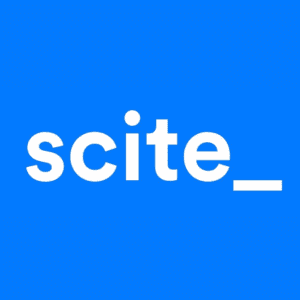
Scite AI – Find & evaluate sources
The Scite AI app uses ‘Smart Citations’ to show how academic papers are discussed—i.e., supported, contradicted, or mentioned. This can help you fast-track the literature review process and source highly relevant papers quickly.

Petal – Chat with your literature
Petal is an AI-driven tool that revolutionises your interaction with documents by enabling direct, context-aware conversations. Upload an article and it will swiftly summarise its contents and allow you to ask questions about the specific study (or studies).

Consensus – ChatGPT for academia
The Consensus app uses a powerful AI engine to connect you to over 200 million scientific papers. It allows precise searches and efficiently summarises key research findings . PS – Get 40% off Consensus Premium by using the coupon code GRADCOACH40.

Litmaps – Visualise related papers
This app is great for quickly identifying relevant research. For any given keyword or resource, it will provide you with a visual citation network, showing how studies are interconnected. This reveals both direct and tangential connections to other research, highlighting gaps and key discussions within your field.

Connected Papers – An alternative
Similar to Litmaps, Connected Papers visually maps academic research, simplifying how you explore related studies. Just input a paper, and it charts connections, helping identify key literature and gaps. It’s ideal for staying updated on emerging research.

Elicit – An “AI research assistant”
Another AI-powered tool, Elicit automates the discovery, screening, and data extraction from academic papers efficiently. This makes it useful for systematic reviews and meta-analyses, as it allows you to focus on deeper analysis across various fields.
Data Collection & Preparation
These apps and tools can assist you in terms of collecting and organising both qualitative and quantitative data for your dissertation or thesis.

SurveyMonkey – Simple surveys
SurveyMonkey is a versatile tool for creating and distributing surveys. It simplifies collecting and analysing data, helping you craft surveys that generate reliable results. Well suited for the vast majority of postgraduate research projects.
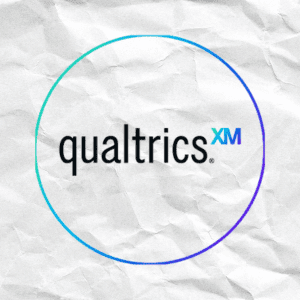
Qualtrics – An alternative
Qualtrics is a comprehensive survey tool with advanced creation, distribution, and analysis capabilities. It supports complex survey designs and robust data analysis, making it ideal for gathering detailed insights and conducting high-quality research.

Otter – Easy draft transcription
Otter is an AI-powered transcription tool that converts spoken words into text. It captures and transcribes lectures, interviews, and meetings in real time. Naturally, it’s not 100% accurate (you’ll need to verify), but it can certainly save you some time.
Qualitative Data Analysis
These software packages can help you organise and analyse qualitative data for your dissertation, thesis or research project.

NVivo – All-in-one qual platform
NVivo is a powerful qualitative data analysis software that facilitates data organisation, coding, and analysis. It supports a wide range of data types and methodologies, enabling detailed analysis and helping you extract rich insights from your data.
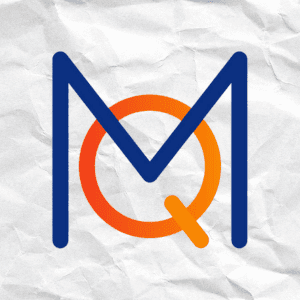
MaxQDA – QDA simplified
MAXQDA is a robust qualitative data analysis software that helps you systematically organise, evaluate, and interpret complex datasets. A little easier to get started with than NVivo, it’s ideal for first-time dissertation and thesis writers.
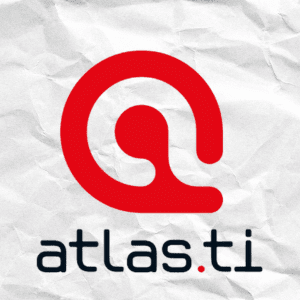
ATLAS.ti – For large datasets
ATLAS.ti offers robust tools for organising, coding, and examining diverse materials such as text, graphics, and multimedia. It’s well-suited for researchers aiming to weave detailed, data-driven narratives as it streamlines complex analysis tasks efficiently.

Delve – An intuitive interface
Delve is an intuitive qualitative data analysis tool designed to streamline the qualitative analysis process. Ideal for dissertations, Delve simplifies the process from initial data organisation to in-depth analysis, helping you efficiently manage and interpret complex datasets for clearer insights.
Quantitative (Statistical) Data Analysis
These software packages can help you organise and analyse quantitative (statistical) data for your dissertation, thesis or research project.

Julius – Your “AI data analyst”
Julius is an AI-powered data analysis tool that simplifies the process of analysing and visualising data for academic research. It allows you to “chat” with your data, create graphs, build forecasting models, and generate comprehensive analyses.
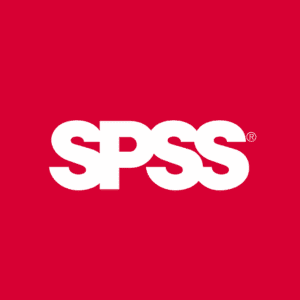
IBM SPSS – The “old faithful”
The OG of statistical analysis software, SPSS is ideal for students handling quantitative data in their dissertations and theses. It simplifies complex statistical testing, data management, and graphical representation, helping you derive robust insights.
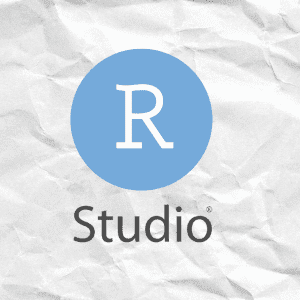
R Studio – For the data wizards
While admittedly a little intimidating at first, R is a versatile software for statistical computing. It’s well-suited for quantitative dissertations and theses, offering a wide range of packages and robust community support to streamline your work.
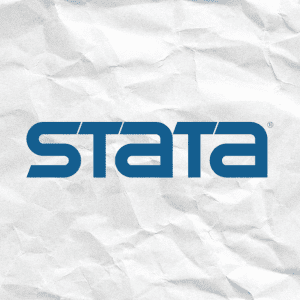
STATA – For the data scientists
Stata is yet another comprehensive statistical software widely used for data management, statistical analysis, and graphical representation. It can efficiently handle large datasets and perform advanced statistical analyses.
Writing Improvement & Plagiarism Tools
These apps and tools can help enhance your writing and proactively identify potential plagiarism issues.
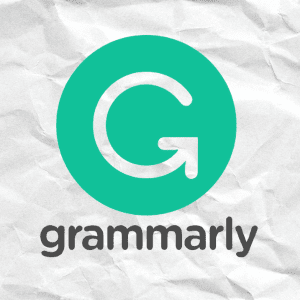
Grammarly – Improve your writing
Grammarly is a writing assistant that can help enhance academic writing by checking for errors in grammar, spelling, and punctuation in real time. It also features a plagiarism detection system , helping you to proactively avoid academic misconduct.

Jenni – An AI “writing assistant”
Jenni AI helps you draft, cite, and edit with ease, streamlining the writing process and tackling writer’s block. Well suited for ESL students and researchers, Jenni helps ensure that your work is both precise, clear and grammatically sound.

Quillbot – Paraphrasing simplified
Quillbot is yet another AI-powered writing tool that can help streamline the writing process. Specifically, it can assist with paraphrasing , correcting grammar, and improving clarity and flow. It also features a citation generator and plagiarism checker .

Quetext – Solid plagiarism checking
Quetext is a plagiarism detection tool that helps ensure the originality of your academic work. It cross-references your documents against extensive online databases to highlight potential plagiarism and generate detailed reports.
Project & Time Management
These apps can help you plan your research project and manage your time, so that you can work as efficiently as possible.

GanttPro – PM simplified
An intuitive project management tool, GanttPro simplifies planning and tracking for dissertations or theses. It offers detailed Gantt charts to visualise task timelines, dependencies, and progress, helping you ensure timely completion of each section.

Trello – Drag-and-drop PM
Trello is a versatile project management tool that helps you organise your dissertation or thesis process effectively. By creating boards for each chapter or section, you can track progress, set deadlines, and coordinate tasks efficiently.
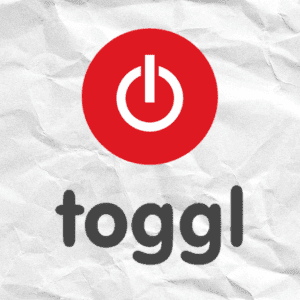
Toggl – Make every minute count
A user-friendly time-tracking app that helps you manage your research project effectively. With Toggl, you can precisely track how much time you spend on specific tasks. This will help you avoid distractions and stay on track throughout your journey.
Reference Management
These apps and tools will help you keep your academic resources well organised and ensure that your citations and references are perfectly formatted, every time.

Mendeley – Your citations, sorted
Mendeley is your go-to reference management tool that simplifies academic writing by keeping your sources neatly organised. Perfect for dissertations and theses, it lets you easily store, search, and cite your resources directly in MS Word.

Zotero – Great for Google Docs
Zotero is a free-to-use reference manager that ensures your sources are well-organised and flawlessly cited. It helps you collect, organise, and cite your research sources seamlessly. A great alternative to Mendeley if you’re using Google Docs.

Endnote – A paid option
Yet another reference management option, Endnote is sometimes specifically required by universities. It efficiently organises and stores research materials, making citation and bibliography creation (largely) effortless.
Honourable Mentions
Now that we’ve covered the more “exciting” dissertation apps and tools, it’s worth quickly making one or two mundane but essential mentions before we wrap up.
You’ll need a reliable word processor.
In terms of word processors, Microsoft Word will likely be your go-to, but it’s not the only option. If you don’t have a license for Word, you can certainly consider using Google Docs, which is completely free. Zotero offers a direct integration with Google Docs, making it easy to manage your citations and references. If you want to go to the other extreme, you can consider LaTeX, a professional typesetting software often used in academic documents.
You’ll need cloud storage.
The number of times we’ve seen students lose hours, days or even weeks’ worth of hard work (and even miss the submission deadline) due to corrupted flash drives or hard drives, coffee-soaked laptops, or stolen computers is truly saddening. If you’re not using cloud storage to save your work, you’re running a major risk. Go sign up for any of the following cloud services (most offer a free version) and save your work there:
- Google Drive
- iCloud Drive
Not only will this ensure your work is always safely stored (remember to hit the Save button, though!), but it will make working on multiple devices easier, as your files will be automatically synchronised. No need to have multiple versions between your desktop, laptop, tablet, etc. Everything stays in one place. Safe, secure, happy files.
Need a helping hand?
Key Takeaways: Dissertation & Thesis Apps
And there you have it – a hearty selection of apps, software and services that will undoubtedly make your life easier come dissertation time.
To recap, we’ve covered tools across a range of categories:
Remember, while these apps can help optimise your dissertation or thesis writing journey, you still need to put in the work . Be sure to carefully review your university’s rules and regulations regarding what apps and tools you can use – especially anything AI-related.
Have a suggestion? We’d love to hear your thoughts. Simply leave a comment below and we’ll consider adding your suggested app to the list.
15 Comments
It seems some of the apps mentioned are not android capable. It would be nice if you mentioned items that everyone could use.
Thanks for the feedback, Gale!
Yet to explore some of your recommended apps. I am glad to commend on one app that I have started using, Mendeley. When it comes to referencing it really helps a lot.
Great to hear that, Maggie 🙂
I have got Mendeley and it is fantastic. I have equally downloaded Freemind but I am yet to really understand how to navigate through it.
Based on your YouTube lessons,my literature review and the entire research has been simplified and I am enjoying the flow now,more than ever before.
Thank you so much for your recommendations and guide.It’s working a great deal for me.
Remain blessed!
Thank you for all the amazing help and tutorials. I am in the dissertation research proposal stage having already defended the qualifying paper. I am going to implement some of your advice as I revise chapters 1 & 2 and expand chapter 3 for my research proposal. My question is about the writing– or specifically which software would you recommend. I know MS Word can get glitchy with larger documents. Do the “reference” apps you recommend work with other options such as LaTeX? I understand that for some programs the citations won’t be integrated or automated such as cite while you write etc.. I have a paid version of endnote, and free versions of mendeley and zotero. I have really only used endnote with any fidelity but I’m willing to adapt. What would you advise at this point?
Thanks for your comment and for the kind words – glad to hear that the info is useful.
Generally, Word works reasonably well for most research projects and is our first recommendation. As long as one keeps the document clean (i.e. doesn’t paste in loads of different styles, ultra high-res images, etc), it works fine. But I understand that it’s not perfect for absolutely huge projects.
Regarding referencing with Latex, this article covers how to use Mendeley with Latex – https://blog.mendeley.com/2011/10/25/howto-use-mendeley-to-create-citations-using-latex-and-bibtex/ . Perhaps it will be useful. I hesitate to tell you to adopt software X or Y, or to move from Endnote, as each software has its strengths and weaknesses, and performs better in certain contexts. I’m not familiar with your context, so it’s not possible for me to advise responsibly. Mendeley works well for the vast majority of our students, but if there’s a very specific bit of functionality that draws you to Endnote, then it may be best to stick with it. My generic advice would be to give Mendeley a try with some sample references and see if it has the functionality you need.
I hope this helps! Best of luck with your research 🙂
Thank you for your amazing articles and tips. I have MAC laptop, so would Zotero be as good as Mendeley? Thank you
Derek would you share with me your email please, I need to talk to you urgently.
I need a free Turnitin tool for checking plagiarism as for the tools above
I have been going crazy trying to keep my work polished and thesis or dissertation friendly. My mind said there had to be a better way to do literature reviews. Thank God for these applications. Look out world I am on my way.
Wow Thanks for this write-up i find it hard to track down extremely good guidance out there when it comes to this material appreciate for the publish site
Sir I have chosen topic substance abuse and psychological makeup a study on secondary school students but my supervisor told me to see some variable on this on which u work plz Need ur help
Submit a Comment Cancel reply
Your email address will not be published. Required fields are marked *
Save my name, email, and website in this browser for the next time I comment.
- Print Friendly

IMAGES
COMMENTS
The 'research design' of a conceptual dissertation There is plenty of scope for doing unconvincing desk-based research. As Jaakkola (2020) writes, to be taken seriously any conceptual claims you make needs to be grounded in what she calls an appropriate research design. By research design Jaakola means the key components of your argumentation ...
Figure 1 illustrates the systematic approach. The details on the left hand side are the minimum approach that could be undertaken in an essay or piece of desk-top research. For more in-depth undergraduate projects, and certainly for full systematic reviews, the details on the right hand side would need to be fully understood and reported.
Desk research is a type of research that is based on the material published in reports and similar documents that are available in public libraries, websites, data obtained from surveys already carried out, etc. Some organizations also store data that can be used for research purposes. It is a research method that involves the use of existing data.
Craft a convincing dissertation or thesis research proposal. Write a clear, compelling introduction chapter. Undertake a thorough review of the existing research and write up a literature review. Undertake your own research. Present and interpret your findings. Draw a conclusion and discuss the implications.
Abstract or executive summary. The dissertation abstract (or executive summary for some degrees) serves to provide the first-time reader (and marker or moderator) with a big-picture view of your research project. It should give them an understanding of the key insights and findings from the research, without them needing to read the rest of the report - in other words, it should be able to ...
Doing Qualitative Desk-Based Research - A Practical Guide to Writing an Excellent Dissertation; Using two key visual pedagogical tools, this book shows you how to produce vibrant and stimulating in-depth qualitative research that draws on data readily available via the internet. Concise, practical and jam-packed with valuable tips, this book will enable you to complete a successful desk-based ...
Desk Research - Methodology and Techniques. As depicted by name Desk Research is the research technique which is mainly acquired by sitting at a desk. Desk research is basically involved in collecting data from existing resources hence it is often considered a low cost technique as compared to field research, as the main cost is involved in ...
Desk research helps to provide focus and a framework for primary research. By using desk research, companies can also get the insight to make better decisions about their customers and employees. #6. More Meaningful Data. Desk research is the yin to the yang of field research - they are both required for a meaningful study.
My list of go-to tools for desk research includes: Google Analytics & Search Console - your own site's performance and visitor stats. Similarweb Digital Research Intelligence - uncover market, industry & competitor trends across web, mobile, and apps. Tableau - data visualization for presenting your findings.
How to Write a Thesis or Dissertation Introduction. Published on September 7, 2022 by Tegan George and Shona McCombes. Revised on November 21, 2023. The introduction is the first section of your thesis or dissertation, appearing right after the table of contents.Your introduction draws your reader in, setting the stage for your research with a clear focus, purpose, and direction on a relevant ...
Dissertation examples. Listed below are some of the best examples of research projects and dissertations from undergraduate and taught postgraduate students at the University of Leeds We have not been able to gather examples from all schools. The module requirements for research projects may have changed since these examples were written.
Desk Research is a method that explores data from existing documents and previous research — secondary data — to gather information over a particular topic. It can provide solid arguments and help you elaborate a line of thought or fight for your ideas. And to do this, Desk Research relies on data already collected from other people.
Cite and reference your sources: Properly cite and reference all the sources you have used in your desk-based research methodology dissertation. Follow the appropriate citation style (e.g., APA, MLA, Chicago) as per your institution's guidelines. Maintain accurate records of your references to avoid plagiarism and facilitate the writing of ...
Introduction. Intern et-based research, a m et hodology that allows re-. searchers to con duct remote studies of users interacting. with th e web, provides em p irical support f or best practic ...
A dissertation is a long-form piece of academic writing based on original research conducted by you. It is usually submitted as the final step in order to finish a PhD program. Your dissertation is probably the longest piece of writing you've ever completed. It requires solid research, writing, and analysis skills, and it can be intimidating ...
Step 1: Restate your research problem and research questions. The first step in writing up your discussion chapter is to remind your reader of your research problem, as well as your research aim (s) and research questions. If you have hypotheses, you can also briefly mention these.
Step 1: Check the requirements. Step 2: Choose a broad field of research. Step 3: Look for books and articles. Step 4: Find a niche. Step 5: Consider the type of research. Step 6: Determine the relevance. Step 7: Make sure it's plausible. Step 8: Get your topic approved. Other interesting articles.
What Is a Research Methodology? | Steps & Tips. Published on 25 February 2019 by Shona McCombes.Revised on 10 October 2022. Your research methodology discusses and explains the data collection and analysis methods you used in your research. A key part of your thesis, dissertation, or research paper, the methodology chapter explains what you did and how you did it, allowing readers to evaluate ...
Craft an enticing and engaging opening section. Provide a background and context to the study. Clearly define the research problem. State your research aims, objectives and questions. Explain the significance of your study. Identify the limitations of your research. Outline the structure of your dissertation or thesis.
Theses and dissertations completed prior to 2006 may be found in the "Archived Theses" and "Archived Dissertations" and are accessible only to those on a Clemson University IP address or using Clemson's VPN service. Visitors not affiliated with Clemson University may request a copy through their local library's interlibrary loan service.
Completing your dissertation or thesis requires a hearty investment of time, effort and hard work. There's no shortcut on the road to research success, but as with anything, there are ways to optimise the process and work smarter.. Here, we'll share with you a wide range of apps, software and services that will make your life a little easier throughout the research process.